

Contents
-
Introduction
-
Part 1: The Ship
- 5Ship Properties
- 6Ship Upkeep
- 7Officers
-
11Making A Journey
-
13Weapons and Items
-
18Customization
-
Part 2: Combat
-
23Combat Overview
-
24Movement
-
27Damage
-
28Hit Points
-
30Magic
-
32Boarding
-
References
-
34Ship Stat Blocks
-
41DM Tools
-
43Tiers of Rules
-
44Tattoos
-
45Nautical Terms Glossary
-
47Integrating other Homebrew
- 48Thanks & Credits
- 49Changelog
-
Printable Sheets

BS_DungenMaster, v1.0
Introduction
As the schooner crested the waves, the Lookout, perched atop the highest mast, cried out a word of warning.
"Ship ahead!"
The officers rushed to the forecastle and peered out into the boiling sea. Not one could make out the vessel they were warned of.
"Friend or foe?" The Captain called up. "What flag do they fly?"
"Red background, with a white tower! Not one that I know, sir!"
The group turned to the Quartermaster, the most traveled of them. His leathery skin made a dry sound as he absentmindedly scratched at his chin.
"That would be the flag of the Chalenca Islands" he mused. "They should have no business with us or our... cargo."
At that moment, a low "pop" sounded, and a smoking missile was seen climbing through the sky. As the party looked on, it ignited blue, and slowly began falling back toward the waves.
"That is, unless, they are Navy" the Quartermaster concluded.
"Positions!" The First Mate called. "Men! To your stations!"
Catching the eye of his Surgeon, composed himself.
"And ladies."
As she gathered her pack of salves and bandages, she smiled at him.
"You'd best remember that. The way this looks, you'll be thanking me later."
The Clairvoyance, her cannons readied, her crew with bated breath, changed course to meet the new challenger.
A half written word document, some index cards, and a lot of improvisation was the first version of my naval rules. More improvisation than usual, I mean.
After a fierce couple rounds exchanging cannon fire, my party narrowly escaped their sinking ship onto the enemy captain's own. While the monk took him one on one, the barbarian, bard on her back, literally flew into the fray. The sorcerer found an advantageous position, raining fire across the deck. In that moment, I knew I wanted more.
As it turns out, transforming a ruleset made completely for land to the water requires a pretty severe overhaul. This wasn't going to be a patch for a theme, or ideas for a DM to start with - this was going to be the foundation and framework of naval campaigning in Dnd - both for myself and others.
I decided, early on, that I wanted to give a potential answer to any question that could be asked. Even if I didn't plan to use it. I would rather include too much and let users slim it down than expecting them to make rules themselves.
Extras and More
Looking for more naval content? The subreddit for Naval rules, questions, companion resources and other discussion is r/5eNavalCampaigns. Come check us out! Here you can find a collection of resources to help your game, including those specially made for this guide. While you're there, drop me some feedback! It means a lot that you might be interested in helping turn this into best guide it can be. A big thank you to all of those who have helped already!
Using This Guide
Playing Surfaces
Throughout this guide, several different play surfaces (both in and out of game) are referenced.
The first of these are "Combat Hexes". Similar to the grid or hex you may use during combat, Naval Combat takes place on 25ft hexes. These hexes are what the "Speed" of ships refers to, as well as cannon ranges, etc.
IRL, Naval Combat does not have to take place on a hex mat- instead, it can be played on an unmarked surface. The following changes should be made:
- Replace any mention of "Hexes" with the Imperial Unit "Inches"
- When moving, ships cannot move backwards. The bow may only move in the fore direction. Each ship may move a number of inches equal to their speed. Each of the Field of Fire templates have a "1 inch" mark, measured from the edge.
- Cannon ranges are also converted to inches (1 inch for every 25 ft). It is recommended to cut a length of string with inches marked for easy measuring.
The other measurement mentioned are "Travel Hexes" and are referred to by the "Travel Speed" of ships. These are the sort of hexes are the scale seen in WotC's "Kingdom-Scale" maps. These hexes are roughly 6 miles each and are only used in relation to traveling far distances, such as across seas or island to island.
Tiers of Rules
The Naval Code is a modular ruleset. The rules are designed so that any combination of them should result in a rewarding naval experience.
Throughout the document, alternative rules are given in yellow boxes. These rules may simplify the game or add an extra level of complexity. A summary of tiers and a collection of their exact changes can be found in the reference section. The Tiers are as follows:
- Captain Hook: Which ignores or simplifies many rules, and is best for quickly adding ships to a game. If you think this may be the route you are interested in, I recommend checking out "The Naval Code: Abridged." It made no sense to have to hunt through rules you were unlikely to use, so I compiled the essential ones in this shorter version.
- Pirates of the Caribbean: The guide in its natural state
- Documentary: For players who wish for gritty sea life.
PART 1
The Ship
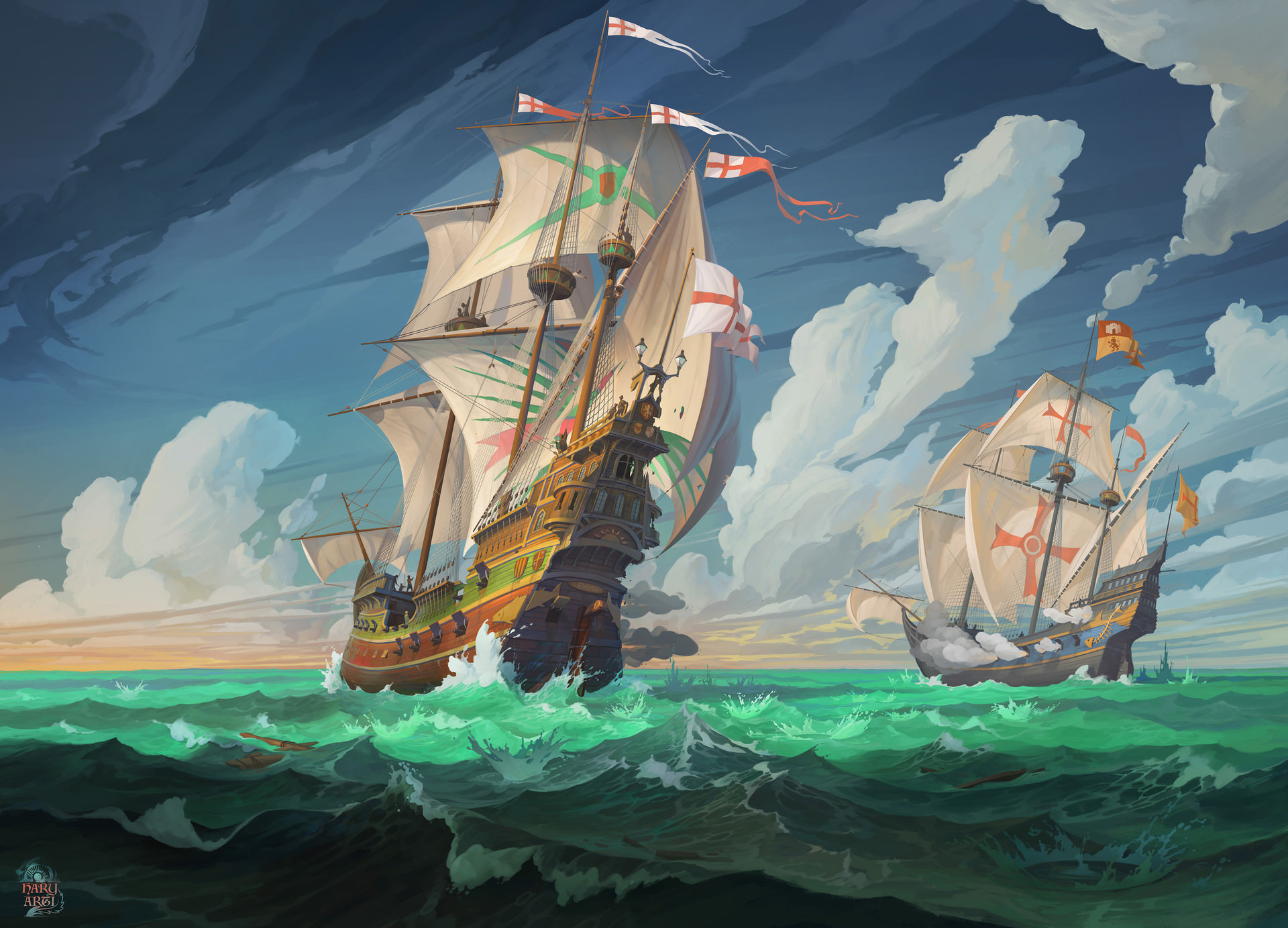
Ship Properties
Class
Ships are categorized into classes based on their size. Each class of ship has different base statistics, found below in the "Base Ship Statistics" table. There are many types of ships in each class, whose unique stat blocks are listed in the references.
1st Rate Ships
100x30 ft. (4x1 hexes)
1st Rate ships are the powerhouses of the sea. Expensive and grand, a harbor rarely has more than a handful docked at once. Navies only bring these out in dire circumstances due to the enormous costs in maintaining and manning them, but when they do, they get the job done. 1st Rate ships have 3 decks, The Main deck which houses many cannons and the masts, with the wheel atop the aft castle. The Gun deck has many of the living quarters in the forecastle, with officer quarters in the aft. The kitchen and other spaces are also on this level. The Orlop deck acts as storage as well as a brig in many ships.
2nd Rate Ships
80x25 ft. (3x1 hexes)
The most common vessel on the sea, 2nd Rate ships are as diverse in function as they are effective. From pursuit to smuggling, 2nd Rates are large enough to handle themselves without being the floating fortresses of the 1st. These will be the most common ship for campaigns; affordable enough to customize but with enough weight to throw around. Generally boasting 2 decks, some of the larger styles have 3. The Lower deck has storage in the center, with crew fore and officers aft. Space is limited, and so Officers will likely share 2-3 rooms. The Main deck is like that of 1st rate.
Unrated
40x20 ft. (2x1 hexes)
Unrated ships are simple and fast. While seaworthy, these don't hold a candle to their larger brethren. Able to be manned by a small amount of men, these may be owned by fisherman, small groups, or wealthy aristocrats who wish to spend a day sailing. Don't let their size fool you, however, as their maneuverability and high AC make them a worthy threat. Without space for a battery of cannons, unrated ships are more intent on the boarding of others, and their stats reflect that. While many unrated ships have 2 decks, some do not have a lower deck at all. Small ships all share several additional characteristics, apart from their own unique differences.
Speed
Like characters, ships may move up to their speed on each of their turns. The speed of a ship refers to the number of 25 ft. hexes it may move on a single turn. Smaller ships are faster than large ones, which is important for maneuvering around their cannons and gaining opportunities for boarding.
For more information on how ships move in Naval Combat, see Movement.
- Traveling Speed While the maneuverability of smaller ships allows them to move quickly around a battlefield, they are unable to keep that speed consistently. The raw sailing power of larger ships keeps them consistent, and so are greater over long distances. Ships have a travel speed equal to the number of 6-mile hexes they are able to travel in a day (assuming 8 hours of travel). These values are what is referenced in the Pilot travel role, and are the basis for the traveling system, where a full day of travel is the full amount.
Traveling Speed
| Ship | Slow Pace | Normal Pace | Fast Pace |
|---|---|---|---|
| 1st Rate | 4 | 7 | 9 |
| 2nd Rate | 4 | 6 | 8 |
| Unrated | 4 | 5 | 7 |
| Smaller Craft | 1 | 2 | 3 |
If a ship is following a current or trade wind, give a +2 to the traveling speed of the ship. If the crew plans to sail for a longer period than 8 hours (but not overnight), than add an additional hex for every 2 hours traveled past 8.
Damage Threshold
Ships are hardy structures which require a considerable attack to take damage. The damage of a single attack must be greater than the damage threshold or have no effect at all on the ship or rigging. This number is not subtracted from damage, it is all or nothing.
Siege Weapons ignore the Damage Threshold of ships.
Storage Capacity
This value does not concern cannons, crew, etc. but pertains only to items, rations, and other things being stored. Beyond this value, each ship has room for chests. All officers share access to 2 lock boxes below deck and possess a smaller locker within their living quarters.
Davit Slots
Davits are cranes to hold lifeboats. A ship can hold a number of life boats equal to its davit slots before they begin to take up storage space. By installing Davits (up to the number of slots the ship has), the lifeboat it holds can be lowered as an object interaction instead of an action. (See Davit section in Ship Enhancements.)
Base Ship Statistics
| Class | Base Price | Size | Speed | Number of Masts | Davit Slots | AC | Damage Threshold | HP | Effective Hp | Cannons (Min/Max) |
Skeleton Crew | Max Crew | Storage Capacity |
|---|---|---|---|---|---|---|---|---|---|---|---|---|---|
| 1st Rate | 35k | 125 x 30ft | 2 | 3 | 10 | 8 | 25 | 700 | 50 | 10/26 | 40 | 70 | 6,000 lbs. |
| 2nd Rate | 20k | 80 x 25ft | 3 | 2 | 6 | 10 | 20 | 500 | 25 | 4/8 | 15 | 40 | 4,000 lbs. |
| Unrated | 10k | 40 x 20ft | 3 | 1 | 2 | 13 | 15 | 400 | 25 | 3/4 | 5 | 15 | 3,200 lbs. |
HP
- HP: The HP of a ship. Ships become crippled under a certain value (Effective HP) and begin sinking at 0.
- Rigging HP: The HP of the Rigging. This is determined by the number of masts on the ship. Each Mast a ship has adds 40 rigging HP. Taking damage to the rigging affects the movement of the ship (Rigging HP section).
- Effective HP: Below this threshold, the ship is nearly wrecked and several restrictions are placed on actions and movement. This is where most ship battles end.
More information regarding the HP of ships can be found in the Hit point section.
Siege Weapons
Most ships have some form of siege weapons, with cannons being the most sophisticated choice. There many choices of siege weapons that can be invested in with a number of upgrades.
Max: How many cannons a ship can hold per side (Port and Starboard)
Minimum: An estimate of how few siege weapons any given ship will carry per side - they could of course have fewer.
Crew
Crew are the sailors who work, live, and die on the ship. While this conversationally includes "Officers", the influential positions PC's are able take, "crew" refers to the unskilled laborers that are hired to work the lines and cannons. Skilled crew are also a potential option, persons with proficiencies who are qualified to act as officers.
Skeleton Crew
The minimum number of workers on a ship needed to make journeys on it without risking exhaustion. This number takes into account the total number of officers, combat units, and the skilled and unskilled crew. More workers are needed to travel around the clock. (See Night Shift)
Max Crew: Total number of persons a ship can house. This includes all crew, officers, and passengers. Can be filled over this with consequences: For every day traveled over capacity, an officer must make a persuasion or intimidation check, DC = 12 + the number of people over capacity. On a failure, morale lowers, and long rests act as short rests for the next day.
Each consecutive check using the same skill raises the DC by 2. On a success, the crew and passengers are placated for 24 hours, wherein another check is required. Even on a success, there may be ramifications based on the tactics that are used. You don't want to lie to a bunch of pirates.
Ship Upkeep
Ships can be repaired and improved at most harbors. Repairs will take 1 day for every 50 hp missing and cost 2 gp per hp repaired (3 gp for a 2nd rate craft, 5 gp for a 1st rate) + 100g for every 40hp of rigging. (Base Prices, some areas could be more or less expensive). Other specifics will need be negotiated as needed.
Enhancements and Upgrades may be ordered and installed during this same time period.
"Alright, then." the Quartermaster said.
"We seem to be ready to make sail. 3 light cannons and a Medium to a side should be more than enough"
The First mate, standing nearby, looked quizzically at him. "The Clairvoyance" is small by Navy Standards. Shouldn't we focus more on our maneuvers than our guns?
The Quartermaster regarded the youth with a practiced eye.
"And, what do you suppose we would do with all that maneuvering? I don't pretend these cannons put us at the top of the food chain - but without them we are sitting ducks."
"You're not all wrong though. Without our speed, these cannons would be worthless. That's what gives us the edge, what gives us a chance. So, good mind of you.
The Captain and Master Gunner were poring over some document near the helm, and the Surgeon, a new member, had found herself a seat by the railing. The Boatswain came above deck, signaling that his repairs were done. Everything was in place, then. It was time to set off.
Officers
Every ship has several Officers who share the responsibility of leadership. Player characters or other skilled characters may take up to 2 Officer Positions each, benefiting from the features and actions of both simultaneously. Many positions are unique and may be taken by only one person at a time. Some have restrictions, requiring the ability to cast spells or certain proficiencies. Printable reference cards for officer positions are available at r/5eNavalCampaigns
The positions and their focus are:
- Captain, First Mate, and Quartermaster: Leadership and Support
- Helmsman: Piloting the Ship
- Cannoneer: Making Attacks with Siege Weapons
- Master Gunner: The Head Cannonneer
- Surgeon: Recovering Casualties
- Boatswain: Repairing the Ship and Weapons
- Arcanist / Militant: Spell Casters or Martial Fighters
All Officers share a position of authority, and as such may give orders to crew (Charisma checks if applicable).
Officer Positions are not restrictions, although some may require constant attention.
During Naval Combat, ships take initiative, and every member of ship acts as one cohesive unit. Rather than taking full individual turns, Officers may only take a single action each on their ship's turn. For information on how this works, see "Officer Locations". Each Officer Position offers additional actions on top of any other actions you can normally take. These actions are Naval-Combat specific, such as firing cannons or piloting the ship.
Features and Actions granted by officer positions are only available during Naval Combat.
Each Position also comes linked a Travel Role; a responsibility you are trusted with while making journeys on the sea, such as navigating or keeping a lookout. The implementation of these roles are further discussed in "Making A Journey". A quick guide to these roles is available in the "Printable" section.
Officer Positions can be taken or swapped as an action but carry over across non-combat scenarios. There is no need to re-take officer positions.
If initiative is called and you do not have an officer position, or wish for a different one, an action will need to be taken to have it swapped / assigned to you.
Captain
Honorary: Captain
Maximum: 1
The Captain, First Mate, and Quartermaster are generally charismatic officers. While the names may imply authority, remember that all Officers share the top of the hierarchy of a ship. Still, a ship would be amiss without someone calling themselves “Captain” and wearing a funny shaped hat.
Without a specific responsibility during combat, these positions focus on supporting others and have the unique ability to take the Boarding Action, in which the entire ship participates. While their Available Actions are the same, differences lie in the Travel Role of each.
Available Actions:
- Rally: Give a d6 Inspiration Die to an ally. A Charisma Check, DC dependent on the situation, is required. You may use this action only once per battle.
- Assess: An Investigation check to locate any weakness of an opponent’s ship. If successful, you have advantage on your next attack or contest against them for the next minute.
- Assign Position: As an action, you may immediately replace one officer’s position, promote someone to an officer position, etc. The target must accept this change.
- You may also use this action to relocate a number of gunners up to double your proficiency bonus to new cannons.
- Board: Free Action. Give the order to Board. See Boarding for more information
Travel Role
- Navigator The Navigator helps plan the route for the ship and assists the Helmsman on their journey. Make a Nature / Survival check at each part of the day (5 total), against the same DC as the Helmsman's survival checks. You gain a +1 to Navigation checks if you have access to a map (you must recognize both where you and your destination are on it)
- Each success by the Navigator awards the Helmsman +1 bonus to their survival check.
- Once the Navigator fails 2 checks, they are unable to give bonuses for the rest of the day.


First Mate
Honorary: Mr.
Maximum: 1
The Captain, First Mate, and Quartermaster are generally charismatic officers. While the names may imply authority, remember that all Officers share the top of the hierarchy of a ship. Still, a ship would be amiss without a jack - of - all - trades to act as the right hand to the other officers.
Without a specific responsibility during combat, these positions focus on supporting others and have the unique ability to take the Boarding Action, in which the entire ship participates. While their Available Actions are the same, differences lie in the Travel Role of each.
- Rally: Give a d6 Inspiration Die to an ally. A Charisma Check, DC dependent on the situation, is required. You may use this action only once per battle.
- Assess: An Investigation check to locate any weakness of an opponent’s ship. If successful, you have advantage on your next attack or contest against them for the next minute.
- Assign Position: As an action, you may immediately replace one officer’s position with another, promote someone to an officer position, etc. The target must accept this change.
- You may also use this action to relocate a number of gunners up to double your proficiency bonus to new cannons
- Board: Free Action. Give the order to Board. See Boarding for more information
Travel Feature
- Shipman. The first mate is known to be a jack of all trades. As such, you are able to help more than normal.
- When you choose to assist another role in their responsibilities, you grant a +2 to their rolls, instead of the usual +1.
Quartermaster
Honorary: Master
Maximum: 1
The Captain, First Mate, and Quartermaster are generally charismatic officers. While the names may imply authority, remember that all Officers share the top of the hierarchy of a ship. Still, a ship would be amiss without someone to help take care of the crew and their quarters.
Without a specific responsibility during combat, these positions focus on supporting others and have the unique ability to take the Boarding Action, in which the entire ship participates. While their Available Actions are the same, differences lie in the Travel Role of each.
Available Actions:
- Rally: Give a d6 Inspiration Die to an ally. A Charisma Check, DC dependent on the situation, is required. You may use this action only once per battle.
- Assess: An Investigation check to locate any weakness of an opponent’s ship. If successful, you have advantage on your next attack or contest against them for the next minute.
- Assign Position: As an action, you may immediately replace one officer’s position with another, promote someone to an officer position, etc. The target must accept this change.
- You may also use this action to relocate a number of gunners up to double your proficiency bonus to new cannons.
- Board: Free Action. Give the order to Board. See Boarding for more information
Travel Role
- Cook. A ship's cook is more concerned about preparing and keeping a balanced nutrition for crew than the actual food. Having a dedicated cook results in high quality rations:
- Having a cook decreases the chance of disease and promotes higher morale.
- After a full day of having a cook, anyone who ate their food may spend one free hit die on their next short rest. Benefit fades at the end of the day following.
Helmsman
Honorary: Mr.
Maximum: 1
Recommended: Proficiency in Water Vehicles
Restriction: Cannot also be a Cannoneer or Master Gunner
Manning the wheel, the Helmsman is responsible for safely navigating the vessel to its destination. While other Officers should weigh in on the direction of the ship, the Helmsman has the final say and makes the rolls. In combat, the Helmsman might be taking Evasive Maneuvers to avoid the enemy's cannons or ramming the prow directly into another ship. While most officers may only take a single action each turn during Naval Combat, you may also take a Bonus Action, which may only be used for your pilot checks. If you take a non-pilot action, then your pilot checks have disadvantage until the start of your next turn. Remember, don’t drive distracted!
Available Actions:
- Evasive Maneuver: Dex/Str/Int Pilot Check with disadvantage: If successful, immediately add your proficiency bonus to the ship's AC and gain advantage on the next pilot check to contest a boarding check until the start of your next turn. 1/2 Speed next turn.
- Come About (Evasive Maneuver Variant): Uses full Movement, pilot check to succeed. The aft most section of ship moves to inhabit the hex forward to the one the bow was previously in, and the bow moves in a straight line over so that the ship extends perpendicular to its former orientation. ½ speed next turn. May cause overboard saves, and consecutive attempts are more difficult. See 'Come About' in the movement section for the full mechanics.
- Ram: Ram your prow into another ship using your movement. 1d12 damage per hex traveled in straight line (that round, Max 10, Minimum 2), taking 1/2 damage back to your ship.
- Boarding Check: Roll to try and grapple a targeted ship at the end of a turn the Boarding action was taken.
- Pilot: Bonus Action. Dex/Str/Int/Wis checks to steer. Ability dependent on what needs to be done (see Pilot Check section under Movement) If this bonus action is not made, ship will continue course but list with the wind (assuming no other factors) If you take a non-pilot action, then your pilot checks have disadvantage until the start of your next turn.
Travel Role:
- Pilot. When making a journey, this role is responsible for making the Best of 5 Survival / Nature skill checks each day to plan and execute a course. Anything that gives bonuses to navigation checks has the same effect on these rolls.
- Best of 5 checks throughout the day.
- If more successes than the DC (Base DC: 2), then subtract 1 day of travel from the total journey time. On a failure, subtract ½ day from the trip. See "Making a Journey" for more information.
- Checks are made with disadvantage if the pilot is not proficient in Vehicles (Water).
Master Gunner
Honorary: Master
Maximum: 1
Behold your artillery, Master Gunman. While you roll attacks and damage for the cannons under your control the same as any normal Cannoneer, you have the unique ability to order any side of the ship to fire all their cannons at once in a massive Broadside. This devastating attack will be sure to satiate your appetite for destruction.
Feature:
- Automatically gain the Officer Position “Cannoneer” – together, these two officer positions count as only having 1. Cannons under your control require one less gunner than normal (min. 1).
Available Actions:
- Call Broadside: (Recharge 5-6) See Broadside Section
Cannoneer
Honorary: Mr.
Maximum: 4
Cannons require men to man them, and men require other men to lead them. As a cannoneer, you oversee cannons on one side of the ship. Repairing misfires and giving extra guidance to your men, you have the final decision on which of your cannons will be fired at the enemy- and the distinct honor of making the rolls. That’s a lot of dice.
Feature: Oversee Cannons
Select one side of the ship. If there are to be more than 2 canoneers, you should instead select a single deck and side. You may not select cannons that are already under a different cannoneer's jurisdiction.
You are in control of all cannons that are assigned to that side, and count as one gunner for the sake of manning them. Firearm proficiency is not required to be a cannoneer. Effects that deal damage when you hit (Hunter’s Mark, Hex) only trigger if you are personally manning a siege weapon - not to cannons you are overseeing.
Available Actions:
- Fire! Make any number of attacks with cannons under your control.
- Concentrate: Move to assist another Cannoneer. While there, you may help man a siege weapon of your choice. If you have proficiency in Firearms, you may add your proficiency bonus to hit for whichever weapon you are manning. You may return to your position as a free action.
- Repair: Using Tinker's or Smiths’ tools, make a check to repair a misfired cannon (DC= 8+ Misfire Score). The cannon does not need to be one under your control. Failure results in the cannon dropping to 0 hp. Must be proficient in the tools you use.
- Assess: Investigation check to locate any weakness of an opponent’s ship. If successful, you have advantage on your next attack or contest against them for the next minute.
Surgeon
Honorary: Dr.
Maximum: None
Requirement: Medicine Skill or other Healing Means
The Seas are a dangerous place, Doctor, and the burden of life in Naval Combat lies on your shoulders. As crew are injured, you may use your action to attempt to get them on their feet again. Be sure to check out the Casualties section to better understand what your position may require. Remember, everyone on the other side is working as hard as they can to make your life hell. Have fun!
Available Actions:
- Treatment (Medicine or appropriate tool Check): On a successful check and one use of a Healer’s Kit, you may return one crew casualty back to the fight. If your current crew count is not equal to your total, add one back (up to the original total) This action cannot be taken if you already have crew equal to your total crew. Reference Casualties for more information.
- Example: During battle, 3 of your 30 crew fell (27/30 Crew). On a success, you may add 1 crew back, your new crew count being 28/30. Assuming no more casualties, you may take this action 2 more times returning the crew to 30/30, at which point this action cannot be taken.
Travel Role
- Surgeon. Spend your day treating the wounded or sick. Requires proficiency in Medicine or an appropriate tool.
- On a successful medicine check, 1d4 people may gain the effects of a Lessor Restoration Spell, with the added benefit of decreasing exhaustion levels by 1.
Boatswain
Honorary: Master
Maximum: 1
What a Doctor does for people, you do for boats. Only, your instruments aren’t as dainty, and boats can’t sue. Take your actions patching up holes and repairing sails- whatever you can to keep your feet dry. If you have a spare moment, fix a cannon or two. Everyone will thank you for it.
Available Actions:
- Order Repairs: As an action, you supervise repairs. Choose to repair either the ship or the rigging. The ship recovers hit points equal to 1d4 + your level, or the rigging recovers 1d4 + your proficiency bonus. If you are proficient with carpenters’ tools, you may add your proficiency bonus to the HP gained (even if you already added it once). You may use this action 3 times per day.
- You may also use this action to attempt to repair a misfired cannon. Using it for this purpose does not count against the total for the day.
- Assess: Investigation check to locate any weakness of an opponent’s ship. If successful, you have advantage on your next attack or contest against them for the next minute. You may add your proficiency modifier to this check, regardless of your proficiency in the skill.
Travel Role
- Carpenter. Spend the day repairing the ship
- The adventuring day is made up of 5 parts. For each of those in which you did not spend time doing anything else (combat, other actions, adventure, etc.), make a Carpenter's tools check (DC: 15). On 3 passes, you may add 2d6 x your proficiency bonus HP back to the ship. You may split this between Ship and Rigging HP as you see fit.
- Assisting this role gives a +1 to each check that you are present for.
Arcanist
Honorary: Magus/Arcan
Maximum: None
Requirement: Ability to cast at least one spell
Some say cannons were invented only to let the mundane contend with the arcane. Arcanists are a central component of any successful ship- leaving port without one is considered foolhardy. While the other officers spend their time wrestling with the ship, take advantage of your own power to influence the battle. Climb to the crow’s nest and rain down fire or obscure your vessel in a well of fog.
Unlike other Officers, you may take full turns on the ship- but that does come with restrictions. While others are not constrained to any physical space, you are. You can’t cast a lightning bolt from the crow’s nest if the turn before you were helping below deck. Your turns on the ship act exactly as they do on land. This physical location overrides the lack of location most officers have.
Feature:
- As an Arcanist, you may use ship turns as you own turn, taking full turns of actions, bonus actions, movement, etc. Your responsibilities to the ship include helping others with their roles, casting offensive and defensive spells, or doing whatever you deem appropriate. See the Magic Section for information on how spells interact with Naval and Ship-bound combat.
- Unlike normal Naval Combat, your location defines what actions are available to be taken- To take an action granted by an officer position, you must be in the Associated Location of the position that grants you that action.
- So, as a Pilot/Arcanist, you must move to the helm to take any actions associated with piloting. For information on how to take actions, and how to interact with other officers, see the Associated Locations Table in the Combat Section.
Available Actions:
- Arcane Well: As an Action, you may begin concentrating on your magic. If by your next turn you have not lost concentration, nor failed a Dexterity save due to the ships movement, you may roll 1d4-1 (minimum result of 1), gaining a spell slot of that level to use only that turn. If you do not have access to the level gained, you instead gain the highest level you have access to. You may take this action a number of times equal to your proficiency bonus per long rest.
Note: As with all officer actions, this action may only be taken during Naval Combat.
Travel Role
- Lookout Responsible for making Perception checks to notice landmarks, obstacles, encounters, etc. If you have a lookout at the start of a Naval Encounter, you gain a +1 to the ship's initiative (even if the lookout missed the threat).
Turn - By - Turn
A turn-by-turn example of an Arcanist
(With the second officer position of First Mate)
to help illustrate the Arcanist's feature:
- Turn 1: Begins in the crow’s nest- Action: “Firebolt”. Movement: move down the ladder to the deck (Full movement)
-
-
-
-
- Turn 2: Movement: Moves to the wheel. Action: “Guidance” on the pilot. Movement: Begin moving back to Mast.
-
-
-
- Turn 3: Action: “Arcane Well”, Movement: Begin climbing ladder. Saves on Overboard Save from About Face.
-
-
-
-
- Turn 4: Arcane Well grants a 3rd level spell slot. Movement: Reaches the top of the mast. Action: Casts “Magic Missile” at 3rd level.
-
-
-
-
- Turn 5: Movement: Climbs back down Mast- Action: Dash, making it halfway to the lower deck.
-
-
-
-
- Turn 6: Movement: Finishes climbing down the deck, Action: “Rallies” (First Mate) the Master Gunner.
-
-
-
-
- Turn 7: Action: Medicine check to assist Surgeon (Success). Movement: Back up to the main deck.
Variant Arcanist: Militant
Militants are Martial Combat Officers who share all the same features and rules as Arcanists, but do not require the ability to cast spells. Arcane Well is replaced with Warrior's Focus.
Variant Action: Warrior's Focus: As an action, begin concentrating on an attack, with the same concentration rules as Arcane Well. If, by the start of your next turn, your Concentration has not been broken, your next weapon attack has Advantage on both the Attack and Damage rolls. This bonus does not apply to Siege Weapons. You may use this action a number of times equal to your proficiency bonus per long rest.
General Actions
These actions are available to any Officer during Naval Combat. This list is not exhaustive.
- Any actions or bonus actions a character may normally take (Bonus Actions may be taken using the officer's action)
- Give orders to Crew
- Participate in Boarding
- Ready for Combat: As an action, gain advantage on individual initiative if standard combat begins before the start of your ship's next turn.
- Interact with anything on the boat
- Brace Yourself: Gain Advantage on Overboard or Displacement Effect Saves until start of next turn
- Man Cannons: Count as a person, may use specialized shots, etc.
- Assist another Officer’s Action:
- Help pull lines, handle ropes, etc. (+1 Pilot Check)
- Assist Surgeon: Surgeon can make an additional medicine check for +1 crew. This check is made at disadvantage unless you have medicine proficiency, or another means of healing available.
- Assist Boatswain: +1 to Check, add your Intelligence Score to the HP gained
- Leave the Ship: Whether by Small Craft, Rope Swings, Jumping Overboard, Etc. See Leaving the Ship for more information.
Making a Journey
In a setting which revolves vehicles, traveling from place to place is a key part of the game. No one buys a ship to let it sit in the harbor! These journeys are exciting and often as fruitful as the goal itself. It is between locations that the joys and discoveries of a naval campaign come to life.
Starting
At the onset of a journey, a destination, however tentative, must be decided. A location on a map, following a series of directions, a known location, or a basic direction are all acceptable.
Making Ready a ship takes 10 Minutes, decreased by 1 minute for every person proficient in water vehicles involved. Making ready involves untethering from the dock, prepping lines and sails, organizing crew, etc. Remember, a ship must have above its Skeleton Crew to make a journey without risking exhaustion.
Travel
Based off the Darker Dungeons Homebrew, traveling on ships is based around Travel Roles- the responsibilities each Officer has available to take on. It is recommended to see the source for any questions regarding traveling.
At the beginning of the adventuring day, you may choose to fulfill one of the roles granted by your officer positions, assist another in their role (granting a +1 to their rolls), or neither. Fulfilling a role is an all day commitment.
As a group, you must also decide on the pace of travel - the speeds of each class of ship are given in the Travel Speed Section.
Your Officer Position defines what roles are available to you. You may elect to change one of your officer positions to gain a certain role. This can be done easily out of combat. Be wary though - once initiative is called, if you want to switch back, it will require an action to do so.
When fulfilling a role, consider it the equivalent of traveling over land – you can’t participate in downtime activities while actively scouting for danger. Over the day, rolls are made by the DM to discover if anything happens- and what that thing may be.
You may not rest while fulfilling a traveling role. It is not required for every party member to take a role, but to make a journey at all you must have a Pilot. If you do not take a role, you may spend the day as you please- downtime activities, resting, etc.- but know that others may not look kindly at too many days off.
Many of the roles echo the originals outlined in the source material, with some additions due to the necessities of life on the high sea. For more information on how to use this traveling mechanic, please reference the Darker Dungeons PDF @ r/darkerdungeons5e
Night Shift
While ships traditionally do not travel during the night, the ship still requires at least one person to keep her steady.
For each portion of watch, a pilot check is made to keep the ship under control on top of a traditional perception check (Pilot DC: 5).
The ship makes very little progress over night, as sails are generally up. If the crew wishes to travel through the night, a number equal to skeleton crew will need to have not worked or fought over the day and will not be able to participate in anything until a potential night shift comes again. Navigation checks are made with disadvantage at night.
Arrival
Upon reaching the destination, there are several options on how to proceed. If the water is deep enough, the ship can be pulled right to land. Should there be a dock, the ship could be tied there. If the water is too shallow, or the area unsavory, boats can be taken ashore. When this second option is taken, the ship generally sits around 600 ft. from shore, and one or more capable crew are left aboard to look after it.
Crew
Non-Officers; Crew are skilled and unskilled NPC’s who assist on the ship. Crew are key to sailing the ship (See Skeleton Crew) and manning cannons in Naval Combat. Crew take care of menial tasks so that the officers don't have to. Larger ships require more crew in order to be functional.
Most crew are "Unskilled", in that they have a commoner's stat block and no proficiencies. These crew cannot be officers but are cheap to hire. Being unskilled does not mean that they are not competent: these men are seamen who are able to carry out the various aspects of seafaring. They are dependable workers, not prone to poor decisions or failure at basic tasks. Being unskilled just denotes their inability to take officer position, their lack of specialization, and their inclusion in things such as Casualty Rolls.
"Skilled" Crew refers to crew who are proficient in a skill (and receive a +5 to checks with it). These are professionals, and their price reflects that. While you can find unskilled crew at any harbor or tavern, Skilled crew are less common and may need to be sought out. Skilled hirelings come in a variety, so prices may vary. Someone with a single proficiency in a low-demand skill may ask 5 gp a day, while a caster who will be asked to fight will likely ask for more than 100 gp (and may haggle for a cut of the profit).
Unskilled Crew are, by default, non-combative. For this reason, they should not be considered during Standard Combat. Fighting a large ship does not mean fighting against 50+ people, but only the combat units the ship keeps. It is up to the DM to respect this, or to warn their players if they plan for the crew to be involved. The crew are not on battle maps nor take up space in the environment. They are ignored until after combat is resolved.
Traits
To better characterize crew, each of them have 3 secret traits, which may be low, medium, or high. These traits don't affect any mechanics (unless you want them to), but help create meaningful characters with potential to be more:
Demeanor:
A basic idea of the agreeableness of a crew member. A summary of their social skills, this has a large impact in their role on the ship, and how they respond to orders or conditions on the ship.
Crew High in demeanor are well liked among the crew, and likely the officers as well. They may be chosen as a sort of mouthpiece for the crew, communicating to the officers the state of things. They will likely seek out and quell trouble on the ship. They raise general moral and take problems and issues in positive ways. If anything happens to them, morale could take quite a toll.
Low Demeanor crew are disliked and unwelcome by many- but not all. They may be sneaky or rude, or simply untrusted. Low demeanor crew may interpret things in the worst way, loath orders, and are quick to resort to extreme measure. Have you ever heard of a mutiny?

Martial Ability
While most crew don't take part in standard combat, you may consider using crew high in Martial Ability in the flavor of things: While they don't enter the battle as a combatant, they may help influence things in other ways. Crew high in martial Ability may eventually develop into combat units.
Crew who are low in Martial Ability are unable or unwilling to fight- this may be respected, or it may be seen as a sign of weakness by the crew.
Prices
| Crew | Price (Per Day) |
|---|---|
| Unskilled Crew | 1 gp |
| Skilled Crew | 5 - 200 gp |
Whenever you make landfall, it's time to even up. Add up the total salaries of your crew and pay them for each day they were with you since last you landed.
Weapons
Siege Weapon Properties
The following rules replace the ones given for siege weapons in the DMG. They introduce slightly modified mechanics to range and damage.
Gunners
Each cannon requires a certain number of gunners in order to load, aim, and fire them. There are no proficiencies required to act as a gunner, but acting as one renders you unable to take other actions. The "Required Gunners" is the minimum number that must be assigned for that cannon to be operable. Remember that this number is not compared to the total number of crew, but that crew is a finite resource assigned to cannons. Cannoneers and the Master Gunner (who doubles as a cannoneer) each count as 1 Gunner.
- So, if you have 4 gunners (including your canoneers), and 3 Light Cannons (Required Gunners: 2), only 2 of the cannons may be active at the same time.
Out of combat, you may assign people however you like to siege weapons- when initiative is rolled, it is assumed that they take their positions. Once in combat, an “Assign Position” Action is required to change their locations. Be sure to note if you have enough crew assigned to man a cannon “Efficiently”.
Attacks and Damage
Siege Weapons do not add any modifiers to their attacks or damage with the exception of Carronades, which add the highest dexterity modifier of those manning it to its damage.
Physical Locations
In Naval Combat, the location of siege weapons are not tracked except their side of the ship, port or starboard. If you have more than 2 Cannoneers, you may wish to further track which deck ships are on for the sake of control.
It takes 5 minutes to change the side a weapon is positioned on.
Ammunition
The Ammunition property is the same as in 5e.
- Carronade: 1 lb. Cannonball, 1 unit BP
- Light Cannon: 4 lb. Cannonball, 1 unit BP
- Medium Cannon: 15 lb. cannonball, 2 units BP
- Heavy Cannon: 32 lb. cannonball, 3 units BP
- Culverin: 15 lb. cannonball, 2 units BP
HP
At 0hp, a siege weapon becomes broken. A broken weapon cannot be fixed using tinker's tools. Smith's tools, and a furnace are required to repair it at 1/4 the cost of the weapon (for materials). These repairs take one hour. Weapons are immune to Psychic and Poison damage.
Range
While similar to normal ranged attacks, siege weapons gain a bonus to hit huge or larger targets (such as all ship) that are within first range listed. The second and third numbers are the same as those for any other ranged weapon (normal and maximum range, respectively). Due to the length of their barrels or size of the machine, no siege weapon can attack targets within 5 ft of them.
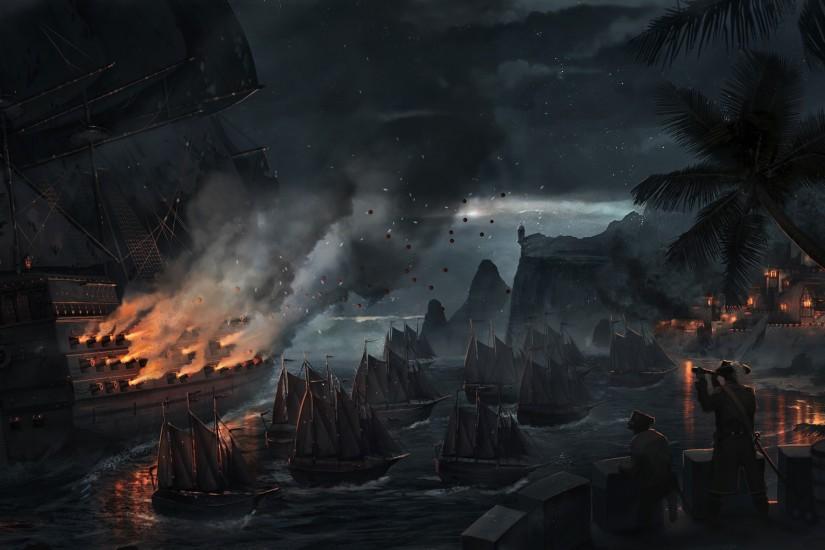

Siege Weapons
| Type | Cost | Required Gunners | HP | Damage | Properties |
|---|---|---|---|---|---|
| Ballista (Ba) | 500 gp | 2 | 50 | 2d10 | Ammunition (range: 50/225/500), Loading (2), Misfire 1, Efficient, Siege |
| Catapult (Cat) | 550 gp | 3 | 80 | 2d10 | Ammunition (range: 50/325/600) , Loading (2), Misfire 1, Efficient, Siege |
| Carronade (Car) | 500 gp | 1 | 60 | 2d6+Dex | Ammunition (range: 25/125/275), Loading (1), Misfire 2, Efficient, Crew Targeting, Siege, Loud, Mobile |
| Light Cannon (L) | 1,500 gp | 2 | 120 | 2d10 | Ammunition (range: 100/400/725), Loading (1), Misfire 1, Efficient, Siege, Loud |
| Medium Cannon (M) | 2,500 gp | 2 | 120 | 4d10 | Ammunition (range: 100/275/550), Loading (2), Misfire 1, Siege, Loud |
| Heavy Cannon (H) | 3,500 gp | 3 | 150 | 7d10 | Ammunition (range: 50/125/225), Loading (2), Misfire 1, Siege, Loud |
| Culverin (Cu) | 4,000 gp | 2 | 120 | 5d10 | Ammunition (range: 0/700), Loading (3), Misfire 1, Siege, Loud, Artillery |
| Flamethrower | Legendary | 4 | 120 | 3d8 | Ammunition (25 ft Cone), Loading (4), Misfire 1, Fire, Siege, Loud |
New Properties:
Artillery. For every round spent aiming the shot, you may add 25ft to its furthest range Maximum: +125 ft (5 rounds). If the full 5 rounds are spent aiming, gain advantage on the shot.
Loading (x). Weapons with this property act as if they have the loading property with an additional rule. The number in the parentheses is the load time, number of turns a weapon must take after firing before it is able to be fired again. The weapon must be manned by its minimum number of gunners throughout the loading, or else the process pauses until it is manned again. As long as it is properly manned, the loading process continues automatically as the gunners are assumed to be using their time working on it.
So, a Light Cannon, loading (1), is able to make one attack every other turn (1 turn between firing).
Loud. Attacks with this weapon are audible within 1000 ft.
Mobile. Siege Weapons with this property can be moved side-to-side as an action.
Misfire. When an attack roll is made for this weapon, and the die roll is equal to or below the misfire score for the weapon, the weapon becomes "Misfired". While Misfired, it is unusable until an action is taken to repair it (Tinker or Smith’s Tools check. DC = 8 + misfire score). On a success, the weapon is back in working order. On a failure, the weapon is broken (See "HP" section).
Efficient. If a weapon with this property is manned by twice the minimum number, the Load Time decreases by 1 (minimum of 0).
Siege Weapon. All weapons discussed in this section count as siege weapons for the sake of double damage to structures and circumventing the damage thresholds of ships.
Crew Targeting. This weapon does not gain Disadvantage when targeting "Crew" (Disadvantage for specific targets still applies. See Targets for more details).
Siege Ammunition
The following ammunitions may be purchased and used for siege weapons. Many have restrictions as to what weapons may fire them, and many have additive effects beyond the weapons normal damage.
Boring Shot
- Medium and Heavy Cannon Ammunition
- Specialized: May only target the Ship. Deals an additional 1d10 Bldg. damage on hit. No damage from an attack that uses this is considered toward casualty damage.
Chain Shot
- Ammunition (Any)
- Target Rigging: Allows the targeting of Rigging without disadvantage.
Cannister Shot
- Light or Medium Cannon Ammunition
- Cannister: Lasts 6 rounds, dispersed by moderate wind or by moving 75 ft. in one turn or 100 ft. over 2 turns. Comes in two varieties:
- Smoke (20 gp)
- Standard Combat: Heavily Obscured 15 ft radius
- Naval Combat: May only target the deck. On hit, one attack per round for the duration is made at disadvantage. (Multiple cannisters stack up to 3 attacks at disv. per round). Attacks against specific targets on the affected ship made at disadvantage for the duration. May also affect perception checks.
Siege Ammunition
| Name | Price (ea.) | Available to: | Effect |
|---|---|---|---|
| Cannon Ball | 3 sp | All Cannons | Basic Ammo |
| Catapult Ammo | 2 sp | Catapults | Basic Ammo |
| Boring Shot | 25g | M,H Cannons | |
| Cannister Shot | 20 gp | L, M Cannons | Special: Gas Cannister |
| Chain Shot | 15 gp | Any | Allows the targeting of Rigging without disadvantage |
| Explosive Shot | 35 gp | L,M Cannons | Special: Explosive Shrapnel |
| Flair | 1 gp | Ca, L Cannons | Special: Signals |
| Fire-Bomb Shot | 35 gp | L, M, Cu Cannons | Special: Fire - Bomb |
| Grapeshot | 15 gp | L,M,H Cannons | |
| Harpoon | Ballista: 25 gp Cannon: 50g |
Ballista, L, M Cannons | Special: Harpoon |
| Pitch - Ammo | 5 gp | Catapults | Special: Ignite |
- Stinking (40 gp)
- Standard Combat: Heavily obscured 10 ft square. If affected: Con Save (DC: 12) or lose your next action coughing. Creatures that don’t need to breathe or are immune to the poisoned condition automatically succeed on this saving throw.
- Naval Combat: May only target the deck - on hit, the number of cannons the affected ship may fire next turn is decreased by 2. While the effect lasts, - 1 to all siege weapon attacks from affected ship until dispersed (Multiple cannisters stack up to 3 times). Attacks against specific targets on the affected ship made at disv. for the duration.
- Upgrade: Heavy Fumes (+25 gp): Dispersing requires a strong wind or moving 3 hexes in one turn (or 6 over 3).
Explosive Shot
- Light or Medium Cannon Ammunition
- Explosive Shrapnel: Ignites ships and flammable objects in the area that aren't being worn or carried. This shot has potential to impact multiple targets. See the "Targeting" Section for more details.
- In Naval Combat:
- Targeting Ship: Deal an extra 1d10 piercing damage to the ship. Contributes its damage to casualties as normal +1 automatic casualty.
- Targeting Crew: No damage, automatic 1d4-1 Casualties (Minimum: 0 casualties).
- In Standard Combat: Targets in a 5ft radius around the impact must make a Dex save (DC: 12) or take 1d8 fire plus 1d8 piercing damage, both halved on a successful save.
Flairs
- Carronade and Light Cannon Ammunition
- Signals:
- Red: Danger
- Blue: Navy
- Yellow-Green: Distress
Fire-Bomb Shot
- Light, Medium and Culverin Ammunition
- Fire - Bomb 1d8 Additional Fire damage on hit. Ignites ships and flammable objects that are not being worn or carried.
Grapeshot
- Light, Medium, or Heavy Cannon Ammunition
- In Naval Combat: Cannot damage ship: when used, there is no disadvantage to target the crew. On hit, automatically causes 1d4-1 casualties.
- In Standard Combat: 15ft cone from the side of the target ship - dexterity save (DC: 12) or 2d8 bludgeoning damage, halved on a save.
Harpoon
- Ballista, Light and Medium Cannon Ammunition
- Piercing hook: A large, barbed hook on a length of rope. Range: 25 ft. Does not deal normal damage from cannon. Instead, deals 1d10 piercing. On hit, adds +3 to Boarding Bonus while attached. Requires a DC: 16 Athletics check to remove.
- Upgrade: Chain (+25g): Uses chain in place of rope.
Pitch - Ammo
- Catapult Ammunition
- Ignite: Ignites Ships and flammable objects
that aren’t being worn or carried.

Weapons
Weapons
| Name | Cost | Damage | Weight | Properties | ||
|---|---|---|---|---|---|---|
| Simple Melee Weapons | ||||||
| Bayonet | 5 gp | 1d4 piercing | 1 lb. | Finesse, light, special | ||
| Pin | 1 gp | 1d4 bludgeoning | 2 lb. | Light | ||
| Boarding Axe | 2 gp | 1d6 slashing | 2 lb. | Light, thrown (range 20/60), special | ||
| Hand- Hook | 5 gp | 1d4 piercing | 1 lb. | Finesse, light, special | ||
| Martial Melee Weapons | ||||||
| Cutlass | 20 gp | 1d8 slashing | 2 lb. | Finesse | ||
| Dirk | 10 gp | 1d6 piercing | 2 lb. | Finesse, light | ||
| Basket-Hilt Broadsword | 15 gp | 1d10 slashing | 3 lb. | Two Handed, Heavy | ||
| Ranged Firearms | ||||||
| Flintlock Pistol | 200 gp | 1d8 piercing | 5lb. | Firearm, ammunition (range: 40/160), loading, misfire 2, loud | ||
| Flintlock Musket | 400 gp | 1d12 piercing | 10 lb. | Firearm, ammunition (range: 120/350), Reload 1, misfire 2, Heavy, two-handed, loud | ||
| Hand Mortar | 150 gp | 1d8 fire | 3 lb. | Thrown, simple, single use (30/60), misfire 3, explosive, loud |
New Properties
Firearm. The stats and properties of weapons which have this property replace the optional rules listed in the DMG. Firearms do not count as simple or martial ranged weapons; Only those with proficiency in firearms may add their proficiency bonus to attacks made with weapons which have the firearm property. Further, making attacks with a firearm without proficiency raises the misfire score by 1.
Should the "Weapon Specialist" Feature be taken to gain access to a weapon with the firearm property, you also gain proficiency with all firearms of the same nature - Pistols (one handed), Rifles (two-handed), or Cannons.
To increase the potential number of firearms for settings in which firearms are common, remove the "Firearm" property. Instead, all weapons with that property are considered Martial Ranged Weapons. This will increase the number of firearms in a game and allow more experimentation.
- Explosive. On hit, everything within 5 ft of the target must make a Dexterity saving throw (DC= 8 + your attack bonus) or take the damage. Saving results in no damage being taken. If the attack misses, the explosive fails to detonate or falls in a location where it does no damage. Access to weapons with this property should be limited.
- Reload. This weapon may fire a number of times equal to its reload score before 1 action or 1 attack must be used to reload it. One free hand is required to reload.
Special Weapons
- Bayonet. A small blade, able to be affixed to a weapon that has the ammunition property. While attached, you can choose for the weapon to change between two forms as a bonus action: Its normal form, or a martial melee weapon which deals 1d4 piercing damage.
- Boarding Axe. While wielding a Boarding Axe in each hand, you have advantage on athletic checks to climb wood.
- Hand-Hook. On a hit, instead of damage, you may attempt grapple the target with advantage as a bonus action. No advantage is gained to maintain the grapple. At your DM's discretion, you may instead try to force the target to drop an item it is holding.
Items
| Item | Price | Weight | Description |
|---|---|---|---|
| Ship Items | |||
| Rope Swings | 20 gp | 1 lb. | |
| Rope Ladder | 25 gp | 4 lbs. | |
| Grappling Hooks | 25 gp | 1 lb. | Finesse, Thrown(range 20) |
| Fire Barrels | 200 gp / Batch | 20 lbs. | |
| Gangplank | 100 gp | 20 lbs. | |
| Anchor | 20 gp | 40 lbs. | |
| Adventuring Gear | |||
| Astrolabe | 100 gp | 3 lbs | No penalty for navigating at night- Requires prof. in navigators’ tools |
| Bandana | 1 sp | - | |
| Eye Patch | 1 sp | - | |
| Fishing Net | 2 gp | 10 lbs | |
| Maps | ~25 gp | - | Value dependent on accuracy and content |
| Reed Breathing Tube | 1s | - | Hollowed out tube, 1 meter long |
| Sextant | 500 gp | - | If Sun or Stars visible, +1 Navigation |
| Spyglass | 200 gp | - | 2 handed- Advantage on perception checks |
| Life Preserver | 2 gp | - | |
| Small Craft | |||
| Rowboat | 50 gp | 300 lbs. | Stat block |
| Longboat | 200 gp | 2,000 lbs. | Stat block |
Anchor
Keeps a ship from moving- ship must already be stopped and cannot be in deep water. An action is needed to raise any anchor.
Instant Anchor: Stops a ship immediately but deals damage to the ship according to it's class: Unrated=50, 2nd rate=75, 1st rate = 100.
Grappling Hooks
Iron hooks on a length of rope. To attach, make a thrown weapon attack against the AC of the ship. For each attached hook, your ship gains a +1 to its Boarding Bonus. Successful grappling hooks break if their target moves out of their range. A grappling hook can be removed with a DC 12 Athletic check.
Fire Barrel
1 batch = 12 barrels. When exposed to fire, each creature and object within 5 feet of the barrel must make a DC 12 Dexterity saving throw or take 4d6 Fire Damage (1/2 on success). The barrel will stay lit for up to 1 min, emitting light and causing 1d6 fire damage to anything it comes into contact with.
When released into the sea, each batch fills a 25ft. space. A ship can make a pilot check (Dex, DC:15) to avoid hitting any. If the barrels are already on fire, on a failure, a ship take 6d10 fire damage as it hits the flaming barrels. If the barrels are not yet lit, no damage is dealt.
Barrels can be fit with a fuse. Fuse lengths can vary from 1 to 10 rounds. After being lit, roll initiative for the barrel. On that initiative, a number of rounds equal to the fuse length later, the barrel explodes.
Gangplank
A 5x15 ft long plank with weak hooks to keep hold. Gives Advantage on the acrobatic / athletics checks to cross between ships at a DC:12. As an action, a gangplank can be affixed between a ship and another ship or dock. Max 3 deployed at once. If the structures it bridges move apart further than its length, it snaps. Gangplanks have several potential upgrades:
- Corvus (300 gp): An advanced Boarding device- uses a Davit Slot. Corvus have the properties of a "Hooked" Gangplank, but do not require a person’s actions to be deployed. The Corvus can be lowered as an Object Interaction instead.
- Extra Long (20 gp): 20ft long
- Extra Wide (20 gp): 10ft wide
- Hooked (20 gp): Adds +1 to the Boarding Bonus while in place
- Safety Net (100 gp): Adds a net that spans the gangplank, held out by small poles. Has the capability to hold 1 medium or smaller sized creature before bursting.
Life Preserver
Gain advantage on athletic checks related to swimming - If you are using a life preserver in water and it is affixed to a ship, you are pulled along with the ship. This does not use your movement.
Rope Swings
A length of rope suspended from the boom of a mast. Can be used as an action to swing, moving 20ft. across or off the ship in the direction of choice with acrobatic check (DC=12)
Max 5 per 50 ft. of ship
Small Craft
Small Craft are boats not fit for naval travel or combat. See the "Leaving the Ship" section in "Overboard" for information regarding taking a small craft during Naval Combat. Their size varies from 10 to 15 ft. but are represented as taking 1 hex. Full Stats are found in the Ship Stat Block section in the references.
Siege Weapons mounted in Small Craft maintain their qualities. Rather than a cannoneer to oversee it, one of the people manning it selects its targets. Small Craft cannot grapple ships but may attach themselves to be pulled along by larger ships by achieving a boarding bonus of +2 . At 0 HP they are simply destroyed.
Customization
Ship Enhancements
The following section offers customizable options for ships and cannons. Both can have as many upgrades / enhancements as can be afforded, but some upgrades cannot be added to the same unit. Build Time is 1 day for every 2,000-gold value.
Arcanist’s Shield
Price: 500 gp
- Characteristics: Defense: A large wooden shield with an open window. Offers 3 / 4 cover. Disadvantage on assess and perception checks when in use. Can be built on deck or crow’s nest. If installed on a crows nest, pick a side of the ship. It is always in effect toward that side.
- Further Upgrades Iron: +100 gp, Fire Resistant: +100 gp, Full Hut: +1000 gp, Hinged: +40 gp
Bow / Stern Cannon Ports
Price: 2,500 gp ea., plus price of cannons
- Characteristics: Adds port holes for 2 siege weapons facing fore or aft. Can only fit Light Cannons, Carronades or Ballista. Acts as an additional "side" of the ship. See "Cannon Aim" for more detailed information.
- Further Upgrades: Davey Jones’s Triplets: Replaces Light cannons with 3-barral cannons. Triplets only available in Bow. Use Light cannon stats, but 1d10 damage and Loading (0)
Crow’s Nest
Price: 500g
Restriction: Only up to # of masts
- Characteristics: High Ground: Ranged spell and weapon attacks from the crow’s nest have increased range equal to 1 / 2 their original range (100 ft → 150 ft).
While in the Crows nest, when you succeed on an "Assess" action, you may grant the benefit to another person. - Further Upgrades: Fireproof (250 gp): Nonflammable, Metal (500 gp), Feather Fall (1000 gp): Once per day, a person in the crow’s nest may use a reaction to receive the benefits of Feather Fall until they stop falling.
Davit
Price: 500 gp
- Characteristics: Cranes by which to suspend Lifeboats on a ship- each Davit can hold 1 boat which can be quickly deployed as an object interaction. Davits/Boats do not provide cover or take space on a battle map.
- Further Upgrades: Longboat Ready (+200g): The Davit is extended, long enough to house a longboat.
Stacked (+350g): Davits are double tall, so that each may hold 2 boats.
Figurehead
Price: 500-2000 gp
- Characteristics: Aesthetics
- Further Upgrades: Can be enchanted, combined with spotlights, or combined with a ram.
Fireproofing
Prices:
Deck: 2,000 gp
Hull: 2,000 gp
Masts: 1,500 gp
- Characteristics: A fireproofed surface is considered “Nonflammable” for the sake of catching on fire. Fireproofing does not make the surface resistant to fire damage.
- Further Upgrades: May add fire resistance
Glass Floor
Price: 1000 gp
- Characteristics: Aesthetic/Exploration: You may see into the ocean below. Damage threshold = 10, the AC is equal to the ships minus 4.
- Further Upgrades: Add a Hatch.
Ironsides
Price: 100,000 gp
- Characteristics: +2 AC, Resist B/P/S from Nonmagical Weapons, Fire resistance and Inflammable. -1 speed, +1 round at 1/2 speed to stop. +6 Damage Threshold, and denies other ships the bonus of "Raking Fire". Not compatible with Live Oak or Reinforced Walls. It takes much longer to complete the upgrade than average, and is likely unavailable from most docks. It may require additional research and resources to be gathered.
Live Oak Hull
Prices:
Bow: 2,000 gp x Ship Size (Unranked=1, 2nd = 2, 1st = 3)
Stern: 2,000 gp x Ship Size
Port Side: 2,500 gp x Ship Size
Starboard Side: 2,500 gp x Ship Size.
- Characteristics: Making the hull out of solid pieces of trees as opposed to cut pieces. +1 AC and +4 damage threshold from attacks to that location. Enhancing the Bow or Stern denies other ships the "Raking Fire" damage bonus from the respective direction. It takes longer to complete this upgrade than average.
- Further Upgrades: May be purchased an additional time in each location for the original price x 2, adding an additional +1 AC and +2 to damage threshold.
Oars
Price: 200 gp for a full set
- Characteristics: While used by a number of people equal to the skeleton crew of the ship, add 1 speed while in use or 2 to the travel speed if used all day. Each person may work an oar for 6 hours before requiring a Long Rest (or Short Rest but gain a level of exhaustion) before the same individual works again. No cannons are available while in use.
- Further Upgrades: Oar-Ports (1,000 gp): Cannons may be fired while oars are in use
Ram
Price: 2,000 gp
- Characteristics: Improved Ram: Increase the damage from the Ramming Action to 2d12 per hex traveled, and the ramming ship takes only 1/4 damage back.
- Further Upgrades: Reinforced Hull (+2,000 gp): Take no damage back when you use the ram action.
Hooked Ram (+1,500 gp): When the boarding action is taken, the conditions of moving the same direction and being side by side can be ignored if the pilot uses their action that turn to ram the target ship (The mechanics of ramming, including the movement needed and damage dealt by the action, are unchanged). Upon ramming, the hooks engage, giving a +5 boarding bonus. This upgrade may be combined with a gangplank, to allow passage over the hull.
Rear-Loading Cannons
Price: 2,000 gp (Whole ship)
- Characteristics: Increases Broadside recharge range by 1 (to recharge 4-6)
Reinforced Walls
Price: 3,000 gp X Ship Size (Unranked=1, 2nd=2, 1st=3)
- Characteristics: +50 Ship HP. This can be taken multible times, up to 3.
Rotating Turret
Price: 1,000 gp ea.
- Characteristics: Swivel: A siege weapon mounted on a rotating turret can fire at targets on either side, as well as ahead of the ship. Uses a Davit Slot.
Sail-Drop
Price: 2,000 gp
- Characteristics: Adds the capability to drop all the sails as an action (Pilot or Captain/First mate/Quartermaster) - Gain double speed for one round but take 50% of your total rigging HP as damage afterwards.
Ship Haul
Price: 100 gp each
- Characteristics: Attach hooks to either the bow or stern of the ship in order to haul / be hauled. Each hook can hold / pull up to a Large sized creature or object. For each size larger, an addition hook is needed.
Ship in a Bottle
Price: Varying. 700 gp for a lifeboat
- Characteristics: Free: Upon breaking or unstopping the bottle, the ship rapidly grows to fill its normal space, following rules the same as an Instant Fortress. One Use.
Spikes
Price: 3,000 gp
- Characteristics: Defensive: Doubles damage to ships which ram it. Failing boarding risks taking more damage, and standard gangplanks may not work
Spotlights
Price: 300 gp ea.
- Characteristics: Light: By placing a torch in these mirrored lanterns, light is focused off deck. Each lantern can illuminate off one side of the ship (4 needed for complete coverage). Using a Spotlight eliminates darkness penalties for anything on that side but offers the same benefit to other ships.
- Further Upgrades: Magic (+200g): Imbued with the “Light” spell, these lanterns do not require a torch and spring up at a codeword. These are too heavy to be removed from railings and carried.
Thick Walls
Price: 2,000 gp X Ship Size (Unranked=1, 2nd=2, 1st=3)
- Characteristics: 25% of damage deal to the ship is considered for casualties (Down from 50%)
The Wheel
Improved Mechanism
Price: 1000 gp
- Characteristics: +1 to Pilot checks
- Further Upgrades: Fine-Tuned (1500g): +2 to Pilot checks. Requires Improved Mechanism.
One-handed wheel
Price: 2000 gp
- Characteristics: Pilot checks are no longer made at disadvantage if preforming an action on the same time (Only applicable to Dex-based checks).
Weighted Mechanisms
Price: 200 gp
- Characteristics: Pilot checks over watch are made at advantage
- Further Upgrades: Arcane Locked (1000g): Nighttime Pilot checks have a 75% chance of succeeding even if no one takes them.
Free Spinning
Price: 500 gp
- Characteristics: Gain advantage on Pilot Checks to take the About Face action.
Siege Weapon Upgrades
Prices are all for the upgrade specifically- they do not include the weapon they are being applied to.
Ease- of – Access
Price: 500 gp
- Available Weapons: L, M, H Cannons
- Characteristics: Requires 1 less person to man “efficiently”
Fail-Switch
Price: 50 gp
- Available Weapons All
- Characteristics: An easy trigger to instantly reduce the weapon to 0hp
Hardy
Price: 100 gp
- Available Weapons All
- Characteristics: Raise HP by 20, Disadvantage on checks to disable
Precision
Price: 800 gp each time, extra 1k each time past the first (compounding). Culverin Costs x2.
- Available Weapons All
- Characteristics: +1, +2 and +3 to hit each time taken, respectively. Must take previous bonus before a higher one. So the price of "+2" is the price of "+1 and +2", or 2,600 gp, and you must have already had +1)
Rifling
Price: 600 gp
- Available Weapons Ca, S and M Cannons
- Characteristics: Increases normal range by 50, and maximum by 25.
Shock Absorbers
Price: 3,000 gp
- Available Weapons All- Whole side only
- Characteristics: The cannons are seated in springs- Decreases DC of pilot roll due to broadsides by 2 and the other side avoids disadvantage on attacks.
Human Cannonball
Price: 750 gp
- Available Weapons H Cannon
- Characteristics: Widens the Barrel. Can no longer fire normal shots. Range becomes 30ft. Deals 3d10 fire damage to the "ammunition"
Bronze Cannons
Price: 1,000 gp
- Available Weapons All Cannons
- Characteristics: A prestigious symbol
Character Options
Backgrounds: Expanded Sailor
The following backgrounds can be added to the normal selection. It is recommended to add these, as they provide skills and abilities that fit a setting the core books do not consider. For example, The RAW Sailor Background (most fitting for a sea faring campaign) wastes its feature if you own a ship. These options look to fill in the gaps left by land centric player options and compliment other aspects of this guide.
All Sailor backgrounds gain the additional feature Sea Legs:
Feature: Sea Legs
Gain advantage on Dexterity checks and saving throws which are due to the ship's motion.
Sailor: Corsair
Not all sailors are in it for travel, or for the romance. Some are in it for money and to better their lot in life. Others are in it for power and privilege. Either way, having a strong background can help you make your way on the high seas.
- Skill Proficiencies: Athletics, Perception
- Tool Proficiencies: Vehicles (water)
- Weapon Proficiency: Firearms
- Equipment: A belaying pin, 50 feet of silk rope, a lucky charm, a set of common clothes, and a belt pouch containing 12 gp.
Feature: Jolly Roger
You spent time sailing under an influential symbol or a well known name, and can be associated with a meaningful insignia, for good or for evil. Your association with this symbol or name grants you advantage on intimidation checks if your target recognizes it.
Sailor: Ship's Surgeon
No one wants scurvy, or to find themselves injured several weeks from shore. The most delicate instrument most of the crew has handled is a butcher’s knife. A ship's surgeon is the backbone of the ship- a man of the sea and of the cloth. Or of science. Or maybe of desperate necessity. Whichever gets the job done.
- Skill Proficiencies: Investigation, Medicine
- Tools: Herbalism Kit, Vehicles (water)
- Equipment: A Healers Kit, common clothes, a quill and ink, and a belt pouch containing 5 gp
Feature: Medical Intervention
On a successful Medicine Check with a Healers Kit on an unconscious target, you may spend 5 uses of your kit to heal the creature for 1 HP. (1/LR)
Sailor: Explorer
Over your journeys, you sought out incredible sights and experiences. Or perhaps they sought out you. Your life puts fisherman's tales to shame - and may be just as exaggerated.
- Skill Proficiencies: Nature, Perception
- Tool Proficiencies: Cartographer's tools, Vehicles (water)
- Language: One of your choice
- Equipment: 50 feet of silk rope, a souvenir of somewhere you have been, a set of common clothes, and a belt pouch containing 5 gp.
Feature: Discovery
You have made a journey to a legendary or secret location. (PHB 134, limited to a location).
Additional Feats
Should you make use of the optional "Feat" Rule, consider the following options to better craft sea-faring characters.
Deck-Hand
Hard work on the deck of a ship has granted you skills and experience, to the following benefits:
- You gain one tool proficiency related to seafaring.
- You may assist a traveling role while Long Resting (not while sleeping)
- You gain advantage on non-spell based Overboard Saving Throws.
- You may assist up to 2 officer's roels while traveling (up from 1)
Firearm Expert
Thanks to extensive practice with firearms, you gain the following benefits:
- You gain proficiency in firearms, if you don't already have it.
- Being within 5 feet of a hostile creature doesn't impose disadvantage on your ranged attack rolls when using a firearm.
- When you use the Attack action and attack with a one - handed weapon, you can use a bonus action to attack with a loaded firearm that you are holding in your off hand. Normal Two Weapon fighting rules apply.
Pilot
Manning the wheel
is natural to you, with the following benefits:
- If you do not have it already, you gain proficiency in Water Vehicles and Naval Signals (Flairs and Flags)
- If you take a non-pilot action, you do not gain disadvantage on Pilot checks.
Boon:
If a player has a sailor background and takes one of the above feats, they gain an additional boon:
Salty Dog
- You may fulfill up to 3 Officer Positions at the same time
- When you rally someone, they may add your proficiency bonus to their roll.
- You gain a climb speed equal to your walking speed, but only on ladders or rigging. Additionally, you have advantage on Acrobatic / Athletic checks relating to moving across the ship, up or down rigging, and boarding.
DM's: Awarding this boon, as well as the feature Sea Legs, should also be considered over the course of a campaign: as a reward, as a result of training, or a passive result of experience on the sea.
Applicable Tool Proficiencies:
- Brewer's: Who doesn’t like ale? Can also purify water.
- Calligrapher's: Analyzing contracts, deals, and maps.
- Carpenter's: Can build many of the ship enhancements, may repair ship using proficiency bonus.
- Cartographer's: If using a map, add +1 to navigation/pilot travel checks.
- Jeweler's: Appraise Treasures and identify mundane loot.
- Navigator’s: Add proficiency to Navigation checks.
- Smith’s: Repair misfired cannons, and broken cannons with access to a forge.
- Tinker’s: Repair cannons that misfire (not able to fix broken cannons).
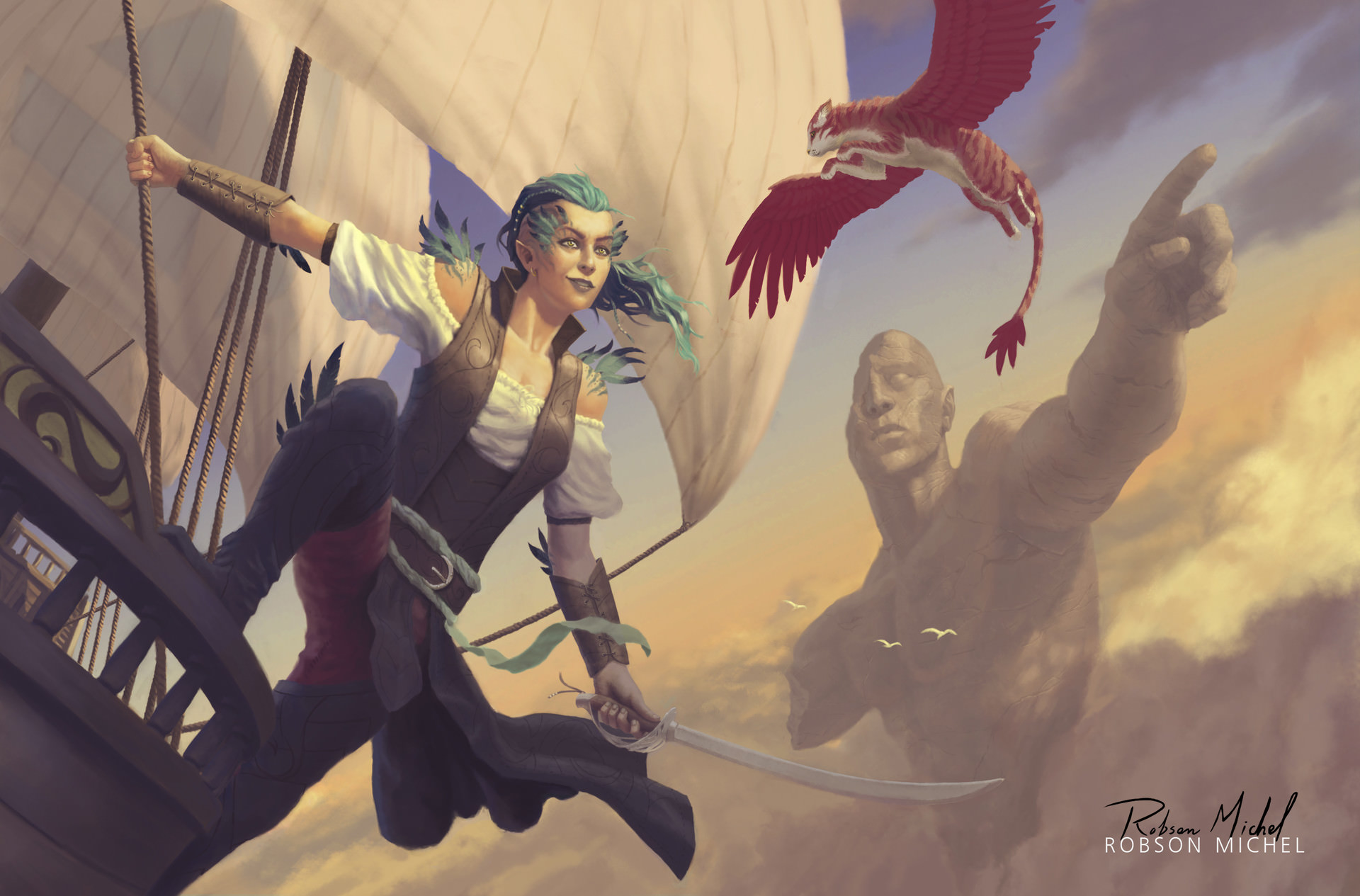

PART 2
Combat
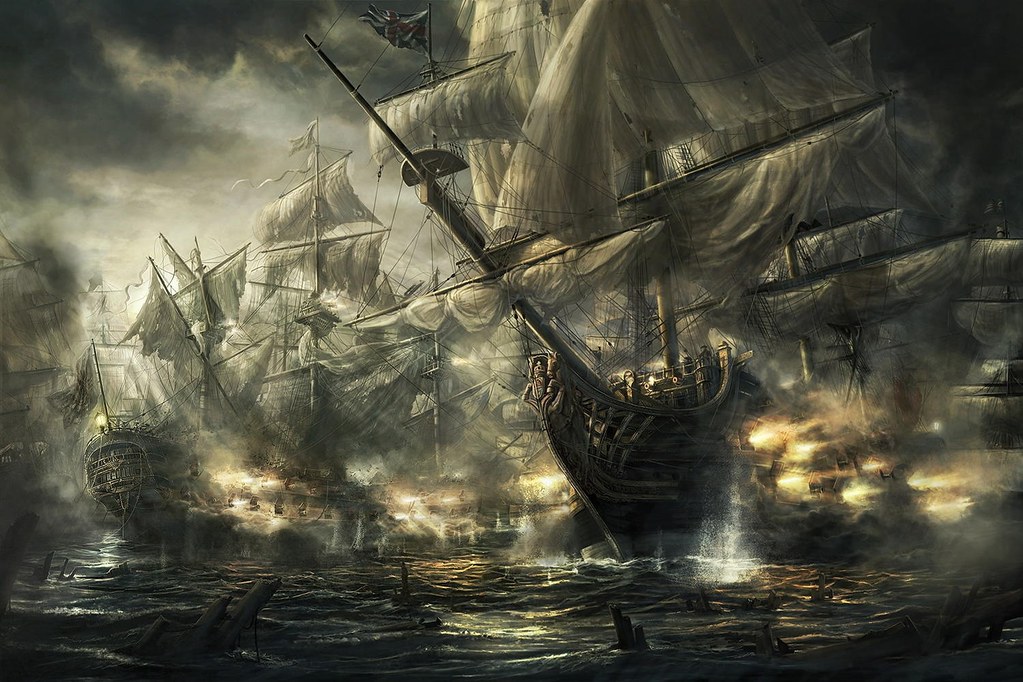
Combat Overview
Naval Combat is designed to take place on 25 ft. Hexes. One round of Naval Combat takes 6 seconds, the same as standard combat.
Naval Combat refers to ship - to - ship combat, when officers’ positions are active, and ships have initiative. Standard combat refers to classic combat when initiative is taken per the individual.
Before Initiative
- Determine ship headings and locations
- Encounters generally won’t start if ships are more than 600ft apart (24 hexes)
- Weather Condition is determined including wave severity and obscurity (night, rain, fog, clear, etc.)
- The Conditions of the sea can affect pilot checks and some actions.
- Wind Direction
- If a wind direction was previously decided, use that. If not, you can roll it randomly
- Clarify Officer Positions
- These positions are central to the design of Naval Combat, giving players authority and actions to take during their ship’s turn. Players' officer positions are locked in when initiative is called.
- It is discouraged to allow switching at this point due to it requiring an action to do so.
Ships Roll initiative
- Add the initiative bonus from the Helmsman
- If you had a Lookout, +1 initiative
- Every Turn, each Officer may take One Action. No individual turns are taken, instead each officer may take a single action during the ship’s initiative, either a general action or one granted from one of their two officer positions. Players who have the Arcanist / Militant position are an exception and are free to take full turns on the ship’s initiative.
- Officers are free to discuss, plan, and intersperse their actions as they wish. While each officer is responsible for their actions, and have the final say, each action is intended to be a group effort.
- Besides actions, the ship may use its movement (controlled by the Helmsman). A Pilot Check is made to ensure proper steering.
- At the end of the turn, Casualties are calculated for any ships that were damaged
- Then, the next ship in the initiative goes.
Turns continue in this manner until an end condition is reached:
- One side surrenders, or a cease fire is called (these only stop combat if they are accepted).
- A ship is Boarded.
- A ship falls below its Effective HP. Battle is paused at this point. Similarly to surrender, the winner may choose to drop combat or continue.
- A ship reaches 0 HP (Sinking). Naval Combat may continue here, individual initiative rolled, or something else. It depends on the circumstances, and is up to the DM.
- One side surrenders, or a cease fire is called (these only stop combat if they are accepted).
Officer Locations
Officers and crew do not have physical locations in Naval Combat
Naval Combat takes on a collaborative - discovery style of narrative, where every possible option is always available, and the entire ship acts together as a single unit.
In Standard Combat, your physical location defines what you can do. You must move to a lever in order to pull it. In Naval Combat, it is the other way around. Your "location" is defined by the things you do or what happens to you. You take an action, or an action happens to you, and you create an explanation for it.
You do not stay in a "location" that is defined after such an event, but move back to a neutral space until something else happens to you or you act on something. Examples:
- Any officer can assist any other, even if one is a cannoneer and the other is piloting
- Any officer could get hit by any cannonball- no matter where you could have been. If casualties are rolled and you receive damage, then you were in the location a cannonball hit.
- You do not move to a casualty to make a medicine check- by making the check, the casualty is understood to have been next to you or it is assumed you moved to them.
You create a collaborative story from the actions that occur during a turn. Despite not technically being in any location, you can still imagine your character in these places and form a narrative.
The exception to this style of play are the Arcanists / Militants, who follow normal rules. See the Arcanist section for more information.
Player 1 (Cannoneer / First Mate): Ok, I'm going to fire the starboard light cannons at the Navy Ship. However, if that same officer took an action granted by the Boatswain position last, they are instead found on the side of the ship last damaged, and fore / aft closest to the enemy ship. Taking a General action does not move the officer and they are found at the last officer action they took. Alternate Location Rules:
You can use the associated location table to instead track the physical locations of all Officers. They must be in the Associated Location of the position to take an action granted by that position. You should track where shots damage the ship, and where casualties fall. Depending on where a shot hits, certain members may or may not be more likely to take damage should a casualty be rolled. During Naval Combat, there are several scenarios in which you may leave your ship. As a result of overboard or displacement saving throws, embarking another ship, abandoning a sinking ship or taking a small craft. Leaving the ship during Naval Combat by any means causes you to become your own entity. Roll an initiative and take turns as you would in standard combat. While on your own initiative, you do not have access to Officer Actions. If you rejoin an allied ship, you regain your officer actions and follow normal Naval Combat procedures. If you go aboard another ship during Naval Combat, they gain individual initiatives and locations same as yourself. However, as they are still on their own ship, they also have access to their Officer Actions. Movement is considered as “From the Bow”. You drive the front of the ship, no matter the size. Movement is performed one hex at a time, up to the speed of the ship. A ship must move at least ½ speed every round, unless it moved ½ speed the previous round, in which case it can stop. (Oars and some enhancements offer immediate stopping) Ships must move forward on their turn unless they have stopped. They may move straight forward or forward diagonally. The bow of the ship never moves laterally, only entering hexes that are “Forward” of it from the orientation of the ship (Due to the hex pattern, there will generally be 2 to 3 possible options). The Aft of the ship follows the bow: the last hex of the ship always inhabiting a hex that ship inhabited prior to the move. In the figure below, the ship inhabits both hexes in the middle when it is diagonal, giving the aft two legal options. If there are multiple possibilities, as when turning in the figure, the aft portion should inhabit the hex opposite the direction of the turn (as illustrated). Unranked Ships (2-hex long) cannot end a movement facing a vertex – each move, their aft always inhabits the hex their prow began. This allows for tight turns and adds to their high mobility. Pilot checks are made by the Helmsman to successfully maneuver the ship. These Bonus Actions incur disadvantage if the Helmsman has already preformed a non-pilot action on this turn. Pilot checks can use a variety of abilities based on the situation. A table of abilities and examples as to when a DM may call for each is below: The base DC of these checks is 8, with modifiers due to conditions. Failing a check in Naval Combat will generally cause the hex to cost twice the movement, but sometimes causes the ship to enter a hex adjacent to the one you were moving towards (often with the wind / waves). In other scenarios, the ship may take damage from impacting obstacles or you may fail to gain an advantage you were seeking. When the Helmsman takes this action, A pilot check (as a part of the action) is made for the success of the maneuver (DC 10 + situational modifiers), and a second bonus action pilot check (DC: 10) is made to avoid invoking Overboard Saves. This maneuver uses the full speed of the ship for this turn, and the ship must move ½ speed next turn after the attempt. On a success, the aft most section of ship moves to inhabit the hex forward to the one the bow was previously in, and the bow moves in a straight line over so that the ship extends perpendicular to its former orientation. Consecutive about faces gain Disadvantage on both pilot checks, and the DC to avoid Overboard Saves is raised by 3 each time. A failure on the initial pilot check causes the maneuver to fail and raises the DC of overboard saves caused by it by 3. Unrated ships instead rotate 180 degrees when they Come About, so that their stern inhabits the hex directly forward of its starting position, and the bow flips its position in relationship to it. However, attempting the maneuver automatically invokes Overboard Saves on the crew, and the DC for the save gains a +5 (+2 for each consecutive maneuver). Wind direction can be determined randomly by rolling 1d12: In order for wind spells to have an affect on the movement of ships, over half the number of masts must be affected by spells cast at level 2 or higher. Each mast does not need to be affected by the same spell or by the same caster, since many spells only affect enough space to impact one mast at a time. Spells cast at higher level give increasing bonuses, and each bonus compounds on the ones before it. Spells which affect water, such as control water, produce the same effects at the same levels, without the need for sails. The spells "Tidal Wave" and "Tsunami" are apt to cause overboard saving throws, but also cause immediate movement effects. Many weather conditions on the sea have effects on movement and combat. Here are some examples with suggested consequences. These, of course, may be combined in situations- the worst storms often cause several at once +1 DC of Int. based pilot checks, Disv. On Int and Dex based pilot checks + 2 speed when sailing with wind Str Pilot checks common Overboard Saving Throws. Ship is immediately moved up to 300ft. in the direction of the wave Pilot check DC is +5, failures or no check cause the ship to drift toward the center. Moving Counter to the whirlpool is Difficult Terrain, while moving with Some actions and interactions have a chance to require dexterity saves from the crew to avoid losing their footing or, at worst, falling overboard. These "Overboard Saves" follow a Beat-By Scale, where the higher you roll than the DC, the better your result, while rolling further beneath the DC produces worse results. If you have more than 5 crew (non-officers), instead of rolling separately for each of them, a crew check should be made on the "Crew Overboard Save Chart", while Officers still roll individually. Spells or other effects / actions which displace people follow a slightly altered system, which can be found in the "Magic" section (p. 31). In Naval Combat, all types of damage - may it be cannons, spells, or individual attacks - have a specific selection of targets. Dealing damage to the ship or rigging deals damage to the associated HP and may also cause casualties among the crew. If an attack might affect more than one target (Such as an AoE spell), then ½ damage is dealt to anything other than the intended target. The same target cannot be affected more than once from a single attack. The targets are as follows: In Naval Combat, the only physical location siege weapons are given is which side they are on- their position forward to aft is not tracked. Siege Weapons installed on ships are large installments which cannot easily be moved and have a limited turning radius. Due to the location of a target, the ship may not be able to fire on a target, or not do it well. The area a ship is able to fire on is known as it's Field of Fire. Ships have two parts to their Field of Fire: A central cone in which all cannons of a side have a clear shot on a target, known as the Full Field, and a second field, slightly larger, in which the cannons may not have as clear of a shot. In this area, the Half Field, the target has Half-Cover (+2 AC). These cones follow similar rules to magic: if a majority of a hex is in a field, it counts as being within it. And if part of the target also inhabits that hex, it counts as being within it. Having a clear shot on any part of a target removes the bonus it might otherwise receive from the half field. Outside of the Field of Fire, the target has Full Cover and cannot be targeted. Each ship has a slightly different field due to their size. Use the templates provided in the "References" section to determine the range at different orientations. Blue Signifies Full Field, while orange indicates the Half Field. To use a template, align the sides with the bow and stern of the ship (or the edges of the hexes the ship inhabits) and align the origin of the template at the midline of the ship. Below are examples of how the templates work with each class of ship. These Templates are only guidelines! If the DM feels confident with the fields, there is no need to use them. Second Rate ships have a similar origin as Unrated with a slightly wider spread, Full field starts at 2 hexes wide. Again, the half field is a single row of hexes beside the full field. First Rate ships have an even larger field as their half field is 2 rows wide. One Enhancement offered to ships is the installation of Bow / Stern Cannon Ports. Should these be installed it counts as it's own side. Weapons and cannoneers must be appropriately allocated to them. The hexes directly fore or aft of the ship are fully covered by the cannons, and they use the "unrated" template regardless of ship class. As an action, The Master Gunner can call for a Broadside (Recharge 5-6). Broadside: Choose one side of the ship. Each siege weapon on that side may immediately attack, at disadvantage, a single target sized large or larger that is within its normal range. They may make this attack even if they are in the middle of loading. For every "1" that is rolled on a damage die, you may roll an additional damage die of that weapon ("Exploding Dice"). You may choose to use "Special Shot" within a broadside, but extra damage from these do not gain the "Exploding Dice" property. Siege Weapons on other sides have disadvantage to hit on the turn this action is used. After this action, every weapon that participated must restart it's load time. The side chosen cannot broadside again until every cannon that fired has naturally gone through a their load time, regardless of broadside's recharge state. The broadside also affects the ship as a whole. The Helmsman has disadvantage on their next pilot check. When either taking or receiving a broadside action, there may be a Pilot Check Save called. On a fail, Overboard Saves may be called for (DC = 6 + Modifiers). When your location is fore or aft of a ship and outside its Port and Starboard Fields of Fire, you target either the Bow (if you're ahead) or Stern (if you're astern) with ranged weapon attacks. "Raking Fire" are attacks fired at these locations, longways down a ship and have potential to inflict greater damage. The damage bonus is only ever awarded when in the appropriate location (specifically targeting the bow or stern normally does not suffice). As long as you are in the appropriate location, you may roll one additional weapon damage die when determining the damage from ranged weapon attacks which target the ship. This bonus applies to any ranged weapon attacks, including those as a part of broadsides or using special shots. The bonus damage does not apply to attacks made against any targets other than "The Ship" (see "Targeting"), and may be denied by certain ship enhancements. Below, Ship "A" has gained the raking fire damage bonus by targeting the bow of ship "B". Ships possess 2 Hit point pools: Ship and Rigging. There is also the Casualty Damage. Ship HP describes the status of the ship, and act much like the HP of a creature. When it hits 0, the ship begins sinking. One half of the damage dealt to the ship is added to the casualty damage for the turn.
Ships also contain a value known as the Effective HP. While they aren't sinking, ships below this value have been nearly destroyed, and their functions are limited. Rigging HP describes the masts, sails, and steering units of a ship. Damaging these do not cause the ship to sink, but as the HP drops, sanctions are put on the ship to represent its limited sailing capabilities. Unlike creature HP, Rigging HP has a series of effects based on the amount remaining, besides just hitting 0. As long as a ship's hit points are below its Effective HP, the following penalties are incurred: When a ship is brought to 0 hit points, it is considered sinking. The ship's speed and travel speed become 0. It is recommended to roll initiative regardless of combat status. All penalties from being beneath effective HP persist, and actions to repair the ship automatically fail. The ship becomes completely submerged in 1d6+2 rounds. Once submerged, the ship sinks 120 feet per round. While Sinking, the ship is considered difficult terrain. On initiative count 20, everyone must make an overboard saving throw. Besides the normal failure results, characters may take bludgeoning damage, be restrained be debris, or other ill effects unique to the situation. Each ship has associated with it a Rigging HP value, representing the masts, sails, and steering units. Each Mast on a ship adds 40 total Rigging HP. As these take damage, movement effects occur based on amount of HP remaining. This HP can be repaired the same as Ship HP. At the end of each turn, causalities must be calculated for every ship based on the Casualty Damage they took that turn. You begin every turn with 0 Casualty Damage, which increases after every hit which adds damage to it. Attacks that target the ship add an amount of damage equal to half the damage they dealt to the ship, while attacks which target the crew have their full damage added. The casualty damage is the sum total over a single turn. Some attacks specify that they do not affect this total, and some others cause immediate casualties and are therefore not considered a second time. At the end of the turn, consult the following chart to determine the results: Example: In a turn, a ship is hit by 3 Light cannon hits (11 dmg each) and a medium cannon (25 dmg) targeting the hull, while a javelin hits targeting the crew (6 dmg). The the ship takes 58 HP damage, and 35 casualty damage, so 1 casualty occurs. For every casualty, a non-skilled crew member becomes unconscious but stable, and is no longer able to be used to man cannons, sail, etc. The DM selects (or randomly determines) who this is, and it should be noted that they cannot be used. After determining casualties for a turn, your casualty damage resets to 0 for the next one. You have a chance to recover casualties during combat through certain actions including the Surgeon's "Medical Intervention" or general healing spells, as well as the Casualty Recovery roll at the end of combat. If an attack that was targeting the ship or crew scores a critical hit, it hits a PC/ Skilled Hireling/ Combat Unit on that ship for damage equal to their level. If they do not have a level, their CR can be used. Who is hit is decided by the DM or rolled randomly. The attack does damage to its intended target as normal, but no damage from the attack, regardless of its target, is considered for casualty damage. If you have 6 or fewer people available and no unskilled hirelings available, end of round casualties are replaced with Officer Casualties. If you take casualty damage during a round, roll a 1d6. If the number rolled is lower than the tier of damage the ship took that round (see the Casualty Chart), an officer or combat unit takes damage equal to their level. Casualties are assumed to remain “stable” until the end of combat. At that point, a medicine check can be made to attempt to save them (must be proficient in Medicine and have a Healer’s kit or another combination of an appropriate skill and kit). Crew who went overboard are not counted in this roll and need to be dealt with on a case by case basis. This check is made at the end of all combats that string together- So if Naval Combat transforms into standard combat, it is to be made at the end of standard. While the roll must be made then, the implications as to time and space (whether you must be on the ship, how long this takes, etc.) are up to the DM. For every Crew you succeed on, remove one use of your Kit. The medicine check DC is equal to 8 + the number of casualties and is rolled on the degree of success "Casualty Recovery" table. To use the help action on this check, you must have proficiency with Medicine or an Applicable Skill. Each additional helper past the first gives a +1 to the roll. You may take disadvantage on the roll to gain a second check, with advantage, to save a specific casualty. Those who took the help action may choose which roll to help, but can only grant their bonus to one. Magic
With the multitude of interactions and new mechanics introduced when fighting on or between ships, some additional rules needed to be in place to expedite magic and create situations with predictable outcomes. AOE spells that are not connected to the ground (Flaming Sphere, Stinking Cloud, Call Lightning) do not move with a ship. They remain where they are cast. In standard combat, this means they will “move” across the battlefield as the ship moves beneath them. AOE spells that are cast to the ground (Wall of Fire) move as a ship moves, remaining stationary in respect to the battlefield. Even in Standard Combat, Spells (or any attack) may hit the ship and damage it if they beat the damage threshold. In both Naval and Ship-bound Standard Combat, spells and effects which incur displacement effects follow a beat-by scale as opposed to the normal save mechanics. Examples of these effects are Thunderwave, or the Shove action. The save rolls against these effects are rolled on the Displacement Save Charts against the save DC. In Naval Combat, the specific effects of the spell or action are replaced with general penalties while their damage contributes to casualty rolls as normal. For information on falling overboard, see "Leaving the Ship". Naval Combat Only, Make a Single Roll. For each Skilled Crew affected, add +1 to the roll Boarding describes the specific strategy of forcing standard combat by coming side by side another ship and grappling it using a "Boarding Bonus" as the modifier for the contest. Boarding is not the only means of invading another ship, despite other methods still resulting in a ship being "boarded". Leaving the ship gives more information on what occurs using other tactics. As in Naval Combat, Unskilled Hirelings are not to participate in any part of boarding. Boarding and assisting it are restricted to those who can take actions in Naval Combat, such as officers and combat units. On their ship's turn, The Captain, Quartermaster, or First Mate takes the 'Board' free action To take the boarding action, the two ships must be side by side and facing the same direction. Their ship becomes the "Offensive" ship, and the targeted ship becomes "Defensive" Officers participate in the boarding. Offensive ship Officers, except the Helmsman, may take actions as normal, including actions which help raise the boarding bonus or actions to leave the ship. The helmsman must save their action to make the boarding check at the end of the turn.
Below are examples of spells that may increase the boarding bonus. This is not an exhaustive list, and the listed bonuses are suggestions which may differ on a case by case basis. Some spells may not add a direct bonus but influence the check in other ways. Instead of helping, you may wish to immediately move onto the targeted ship. The "Boarding Party" should take the "Ready" action to move across using their method of choice with the trigger "when the boarding succeeds". Using them immediately, instead of holding them, could result in being stranded. While in this variant grapple, the speed of both ships drops to 0. Instead, they each move forward one hex at a time in the direction they were heading, potentially listing. The ships stay 10ft away from each other, and neither is able to move freely until the grapple is broken (the boarding bonus reduced to 0), at which point both ships may move freely. As long as the grapple is maintained, neither ship has access to officer actions except the Helmsman. Cannons and other features of the ships are still functional but must be manned or used on an individual basis since unskilled hirelings are not considered present during standard combat. Each round, the offensive helmsman must keep the grapple active using either their Action or Bonus Action. The ships drift apart 5 ft. each round on Initiative count 1 if this bonus action was not taken. This drifting does not occur if the Boarding Bonus is greater than or equal to + 5, as the ships are assumed to stay together. The ships start at 10ft away from each other and move apart from there. Gangplanks are destroyed if the distance between ships is longer then their length. Grappling hooks and harpoons are likewise rendered ineffective if the ships drift apart further than their normal range. The grapple ends if the boarding bonus is reduced to 0. The defending or offensive ship may also end the grapple by manually reducing the boarding bonus to 0. This can be done by directly negating the means the offensive ship is using to increase their bonus. Possibilities, depending on what the offensive ship has in place, include removing the grappling hooks, cutting ropes connecting the ships, pushing the ships far enough that these break, etc. These actions may also be held during Naval Combat so they can be done as a reaction as soon as standard combat begins. Many spells hold potential to affect the boarding state, offensive or defensively, such as pushing a ship or controlling the opposing pilot. As soon as the boarding bonus equals 0, the grapple ends, and the fight on deck either continues or Naval Combat is resumed. In most cases, Naval Combat is resumed with several officers disembarked and aboard another ship - See Leaving the Ship for more information. When reentering Naval Combat, the ships should be next to each other and facing the same way, and pilots should re-roll the ships' initiatives. If there are other ships in the fight or officers still disembarked, keep those initiatives and add the new ship initiatives to the initiative order. 1st Rate, 35,000 gp 1st Rate, 50,000 gp 1st Rate, 40,000 gp 1st Rate, 70,000 gp 1st Rate, 40,000 gp 1st Rate, 40,000 gp 1st Rate, 37,000 gp 2nd Rate, 20,000 gp 2nd Rate, 20,000 gp 2nd Rate, 23,000 gp 2nd Rate, 22,000 gp 2nd Rate, 28,000 gp 2nd Rate, 23,000 gp 2nd Rate, 24,000 gp 2nd Rate, 20,000 gp Unrated, 10,000gp Unrated, 12,000gp Unrated, 10,000gp Unrated, 12,000gp Unrated, 8,000gp Unrated, 4,000gp Small Craft, 50gp Small Craft, 200 gp I see this section as a chance to speak a bit more informally to you, the DM, to help you use this guide and give you some personal suggestions.
As a shortcut to deciding which rules to use, I have defined different tiers of rules. Each tier adds more complexity and realism to the game. These groupings are suggestions. Mix and match to find the things in which you are most interested! These rules are written so that you can skip all the fluff- just add the Ships with some Cannons to your game for a quick session on the high seas. For a more memorable time, it is recommended to at least move up to “Captain Hook”. Officers and their actions are the backbone of Naval Combat. Simple, straightforward play. Also see 'The Naval Code: Abridged' Captain Hook is meant for groups that don't want to learn too many new mechanics and want to avoid looking up results on tables. It adds a few rules to streamline the game: Instead of linking different toles of traveling to each Officer Position, you may instead allow for anyone to undertake any available role. This is a simpler and more forgiving method. (p.12) These rules are offered in the section to avoid referencing the tables as much. They require fewer rolls and offer predictable results. (p. 26) Many more rules are ignored than added. To streamline the rules and focus more on the game, the following non-essential rules can be dropped: The “intended” version: A classic DND balance of challenges, with room for debauchery. The Naval Code is built for this level, so no additions or subtractions are needed. A realistic, less forgiving and resource considering variant. Sometimes, it is fun to track everything about the ship. How are the rations? Do we have black powder? Are the crew pacified? The following rules add more detailed rules for a more realistic experience. Some of your crew must continue sailing the ship instead of manning cannons. (p.6) A more realistic and expensive model. (p.13) Cannons require both the proper sized cannon ball as well as the proper amount of black powder. If these get ruined or run out, you will not be able to fire those cannons. (p. 13) You may not sail directly into the wind, and anywhere upwind is difficult terrain. More realistic, and invites greater strategy. (p.25) A harder DC so fewer casualties are recovered after battle. Below is a list of recommended / optional house rules or Homebrew guides, along with an explanation as to why I used them or believe they could be used. Highly tested and recommended, those which I think to be essential to the experience, are marked with the "Natural 20". You could say they are critical in my opinion. Ha. Since traveling by ship results in lots of downtime, I highly recommend using the alternate rest rules from the DMG. Personally, I use Long Rest = 2 days of light or downtime activity, while Short Rests remain 1 hour. Sleep is still required every 36 hours or else exhaustion may take effect. I do this to better fill the time on ship, let officers make meaningful choices about what traveling roles they take, and make the actual adventure more dramatic - the players may feel the relief of landing at port for a few nights rest. I find that with a naval campaign, this rest system helps pace it the way I want. In light of a more punishing rest system, I wanted to help my Long Rest gated casters just a bit. Integrating evolving cantrips meant that in lieu of spell slots, they still felt like they had things to offer around the ship. In a guide which introduces firearms, it would be a disservice not to mention the Gunslinger Archetype for Fighters, created by Matthew Mercer. This is, in my opinion, the best choice for a gun using PC, and I built some of the rules of the game with this subclass in mind, such as the Misfire rules for cannons. I would like to recognize that the guns offered in this guide (listed in the “Gear” section) differ from his own stats, and in my game I use both. The Gunslinger should have the best weapons. “Common” guns, those in this guide, are more expensive and less effective than those the gunslinger creates- I let them upgrade normal firearms into their Gunslinger versions for for a fraction of the price. This is to help differentiate a gunslinger from anyone else with a gun, while still allowing other players and NPC's to access firearms. The following aspects of this homebrew I use (or have used) in naval campaigns: This guide presents rooms you may build in strongholds which bestow benefits. I really liked the idea of allowing players to build these expansions on their ships to make them a personalized floating fort. Due to the economy surrounding ships, I doubled the prices as listed. I also recommend "Traders and Merchants" by the same user for populating harbors. Carrack: Includes “War Room” for free (no expansion slot used) In order of appearance:
Player 2 (Boatswain / Helmsman): Wait, we have 2 movement left this turn. Let me bring us in closer so you can get advantage to hit.
Player 3 (Arcanist / Surgeon): DM, I used my action to recover a casualty, but I want to use guidance on Player 2 next round. Can I use my movement to make it to the side he was repairing?
DM: You can, but since he's just used his pilot action you'll actually need to go to the Helm. You can make it this turn. As you climb to the top of the deck you see the Navy ship getting quickly larger, as your pilot madly turns the wheel toward it. A thunder of cannons erupts, filling the air with smoke. Roll for the attacks, Player 1.
Associated Location Table
Last Officer Action taken
Location
Captain, First Mate, and Quartermaster
Poop Deck
Helmsman
The Helm
Master Gunner
At the cannons they preside over
Cannoneer
At the cannons they preside over or currently man
Surgeon
Side of Ship last damaged, center
Boatswain
Side of ship last damaged, fore / aft based on location of enemy ship
Arcanist / Militant
Actual location
Crew
Cannon side they are manning, or main deck if sailing
Leaving the Ship
Movement
Turning
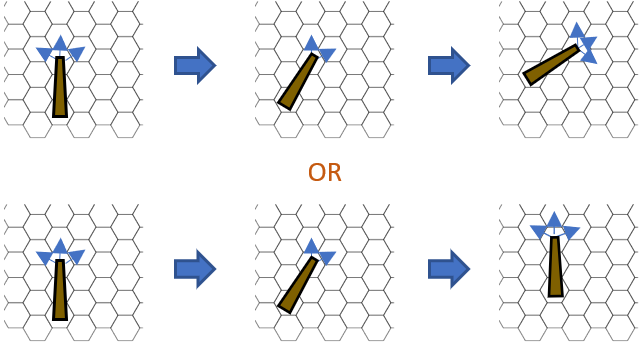
Pilot Checks
Dexterity
Base Skill: Reacting to things, adjusting course
Strength
Fighting strong waves or current, fighting the forceful displacement of a ship, fighting or keeping a boarding grapple check
Intelligence
Planning a route through sharp rocks, intercepting another ship
Wisdom
Riding with the wind, determining tides
Evasive Maneuver: Come About
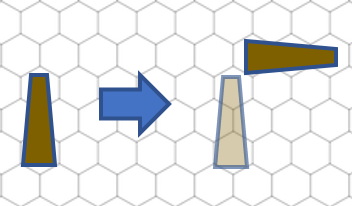
Wind
Wind
d12
Direction
1
North → South
2
NE → SW
3
E → W
4
SE → NW
5
Favorable
6
No Wind Bonus
d12
Direction
7
No Wind Bonus
8
Unfavorable
9
S → N
10
SW → N
11
EW → E
12
NW → SE
Spell Effects on Movement
Conditions
Weather / Ocean Conditions
Condition
Effect
Fog
Disadvantage on Asses actions
Heavy Fog
Disadvantage on assess actions
Disadvantage on attack rolls further than 100ft
Heavy Rain
Disadvantage on Overboard Saves
Heavy Wind
Failed Pilot checks cause ship to move downwind
Disadvantage on evasive maneuvers
Pilot checks may use STR.
Choppy Waves
+1 to Pilot checks
Large Waves
Lair action: Pilot check to avoid Overboard Saves
Disadvantage on Boarding and acrobatics to board.
Tidal Wave
Whirlpool
it gives +3 speed.Overboard
What may cause overboard Saving Throws:
- Naval Combat: Failures always result in disadvantage on any action taken next turn
- Crew is assumed to save unless a Natural 1 was the cause of this check, in which case 1 crew member falls overboard.
Overboard Save Charts
Standard Combat
Result
Effect
Success
Save
Failure by 9 or less
Move 5 feet in the appropriate direction (Chosen by DM). If this moves you off the ground you are standing on, move to the edge and fall prone instead.
Failure by 10 or More
Move 15 feet in the direction the DM chooses. If this moves you off the ground you are standing on, make a Dex save (Same DC). On a success, fall prone at the edge. Otherwise, fall overboard.
Crew Overboard Save Chart
Result
Effect
Success by 5 or More
All Save
Success
All Skilled save, and 1d4-1 unskilled fall prone
That many crew may not be used next round
Failure by 7 or less
All Skilled Save, and 1d4 unskilled fall prone
That many crew can be used next round.
Additionally, 1 who fell prone instead falls overboard
Failure by 8 or More
1d4-2 Crew Fall overboard. If the save roll was 1, one of them is a skilled hireling
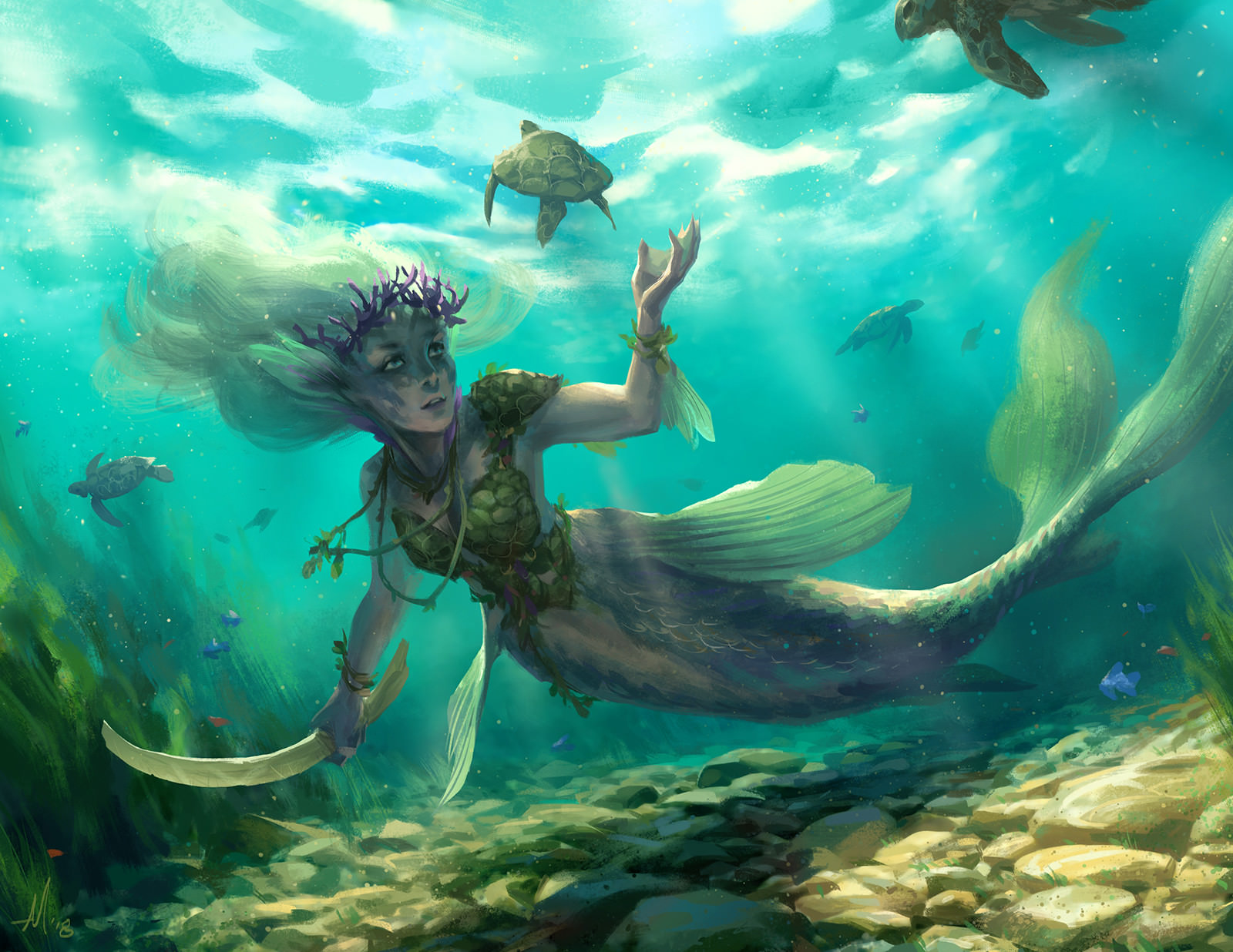

Damage
Targets
The Hull is the target of any attack against the ship. Damage done to the hull must succeed the damage threshold of the ship (per attack). Attacks which target the ship add to the Casualty Damage an amount equal to half of what they dealt to the ship. With the exception "Raking Fire", attacks to the hull always hit the side closest to the attack, either port or starboard. The deck is the same as the hull in all respects, but attacks against the crew or specific targets might damage it specifically.
Field of Fire
Field Templates
Unrated:
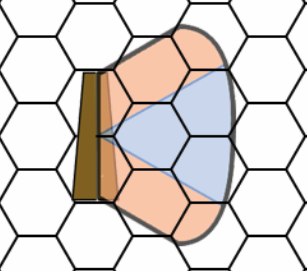
2nd Rate:
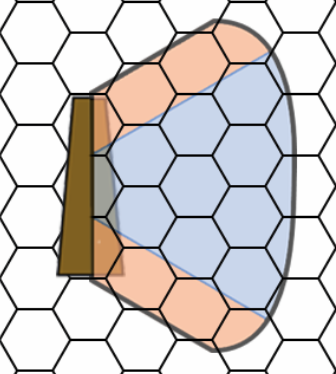
1st Rate:
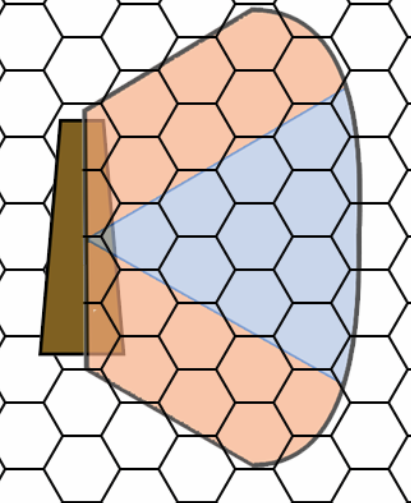
Bow / Stern Cannons
Broadside
Raking Fire
Hit Points
Ship Hit points
Going Beneath Effective HP
Sinking
Rigging Hit Points
HP Remaining
Condition
51% or More
Full Effectiveness
50% - 26%
No bonus with wind
25% - 11%
No bonus or penalties from wind
1/2 Speed, 1/2 Travel Speed
10% or Lower
No Bonus or penalty from Wind.
Speed equals 1, Travel Speed equals 1Casualties
Casualty Chart
Tier
Casualty Damage
Casualties
0
<30
No Casualties
1
30 - 39
1 Casualty
2
40 - 69
1d4-1 (minimum 1)
3
70 - 119
1d4 (minimum 1)
4
120 - 159
1d4+1
5
160 - 199
1d4+2
6
≥200
1d4+3
Officer Casualties
Crewless Casualty Rolls
Casualty Recovery
Casualty Recovery
Roll
Result
Succeed by 10 or more
You masterfully save all casualties.
They are incapacitated for 2 hours
and suffer no exhaustion.
Succeed by less than 10
You save all the casualties: They are incapacitated for 6 hours, and upon
awakening suffer 1 point of exhaustion
Fail
One crew member is unable to
be saved for every number below the DC you rolled, maximum loss of 5. You decide whom.
Survivors are incapacitated for 18 hours,
and upon waking suffer 2 points of exhaustion.
Fail with a Nat. 1
There are no survivors: Shaken, you and anyone who assisted take 1 point of exhaustion.
General Rulings:
Magic in Standard Combat

Displacement Effect Saves
Determining Targets
Standard Combat Displacement Save
Result
Effect
Success
You Save
Failure by 4 or less
Follow the directions of the effect.
If this moves you off the ground you are standing on, and not onto
different ground (your ship, another ship, land, etc.) stop moving at
the edge of the furthest point of land and fall prone instead.
Failure by 5 or More
Follow the full, unchanged directions of the effect
Crew Displacement Save Chart
Result
Effect
Success by 5 or More
All Save
Success
All Skilled save, and half the affected unskilled fall prone
That many fewer crew may be utilized next round
Failure by 7 or less
All Skilled Save, and 3 out of 4 unskilled fall prone
That many fewer crew may be used next round
Additionally, 1 which fell prone instead falls overboard
Failure by 8 or More
2 out of 3 affected unskilled crew fall overboard
Affected Skilled crew must roll on the normal chart at disadvantage.Boarding
Boarding Procedure
The goal of those assisting is to increase the Boarding Bonus by using grappling hooks, harpoons or spells. A bonus of at least +1 is needed or else the boarding automatically fails.
Here is a collection of what may give a boarding bonus, and a reminder of what offensive boarding bonus they give. The location of the mechanics is also given.
Action
Source
Bonus
Grappling Hook
Items
+1
Harpoon
Ammunition
+3
Hooked Gangplank
Ship Items,
Gangplank Upgrade+1
Hooked Ram
Ship Enhancements
+5
Spell
Bonus
Grasping Vine
+1
Web
+2
Bigby’s Hand
+3
Arcane Hand
+3
The Boarding Check
On a failure, the ships are not grappled. The offensive ship's turn ends, and Naval Combat continues. You may continue to attempt to board on your ship's turns so long as the conditions are met.
On a successful boarding check, the boarding succeeds and both ships are in a modified grapple, detailed in "The Boarding". If an action was held to move onto the ship, it is taken now.
Naval Combat ends and individual initiative is rolled for everyone. Begin Standard Combat.The Boarding
Breaking the Boarding
Aboard the defensive ship, the "use object" action can be taken on the wheel of a ship to attempt to immediately break the grapple as an action, or as a bonus action if performed by the Helmsman. This pilot check follows the guidelines in the "Helmsman" section, including being at disadvantage if a non - pilot action was already taken that same turn. If the offensive ship remains piloted, this may be contested the same as the initial check. Otherwise, it is a pilot check with a DC of 10 + the offensive boarding bonus. On a success, you are able to wrestle the ship out of the range of whatever methods the opponent used to achieve their boarding bonus, breaking ropes and snapping gangplanks, automatically reducing the bonus to 0. Only one check to break the boarding maybe taken per round.Ending the Grapple


References
Ship Blocks
1st Rate Ships
Merchant
Damage Threshold
Effective HP
Cannon Min/Max
Skeleton Crew
25
50
10/26
40
Characteristics
Carrack
Damage Threshold
Effective HP
Cannon Min/Max
Skeleton Crew
27
50
10/26
40
Characteristics
East Indiaman
Damage Threshold
Effective HP
Cannon Min/Max
Skeleton Crew
25
50
10/26
40
Characteristics
Man - O - War
Damage Threshold
Effective HP
Cannon Min/Max
Skeleton Crew
25
50
20/50
40
Characteristics
Galleon
Damage Threshold
Effective HP
Cannon Min/Max
Skeleton Crew
25
50
10/26
40
Characteristics
Guineaman
Damage Threshold
Effective HP
Cannon Min/Max
Skeleton Crew
25
50
10/26
40
Characteristics
Pink
Damage Threshold
Effective HP
Cannon Min/Max
Skeleton Crew
25
50
10/26
40
Characteristics
2nd Rate Ships
Brig
Damage Threshold
Effective HP
Cannon Min/Max
Skeleton Crew
20
25
4/8
15
Characteristics
Schooner
Damage Threshold
Effective HP
Cannon Min/Max
Skeleton Crew
20
25
4/8
15
Characteristics
Frigate
Damage Threshold
Effective HP
Cannon Min/Max
Skeleton Crew
20
25
4/8
15
Characteristics
Carvel
Damage Threshold
Effective HP
Cannon Min/Max
Skeleton Crew
20
25
4/8
15
Characteristics
Clipper
Damage Threshold
Effective HP
Cannon Min/Max
Skeleton Crew
20
75
4/8
15
Characteristics
Galley
Damage Threshold
Effective HP
Cannon Min/Max
Skeleton Crew
20
25
4/8
15
Characteristics
Junk
Damage Threshold
Effective HP
Cannon Min/Max
Skeleton Crew
20
25
4/8
15
Characteristics
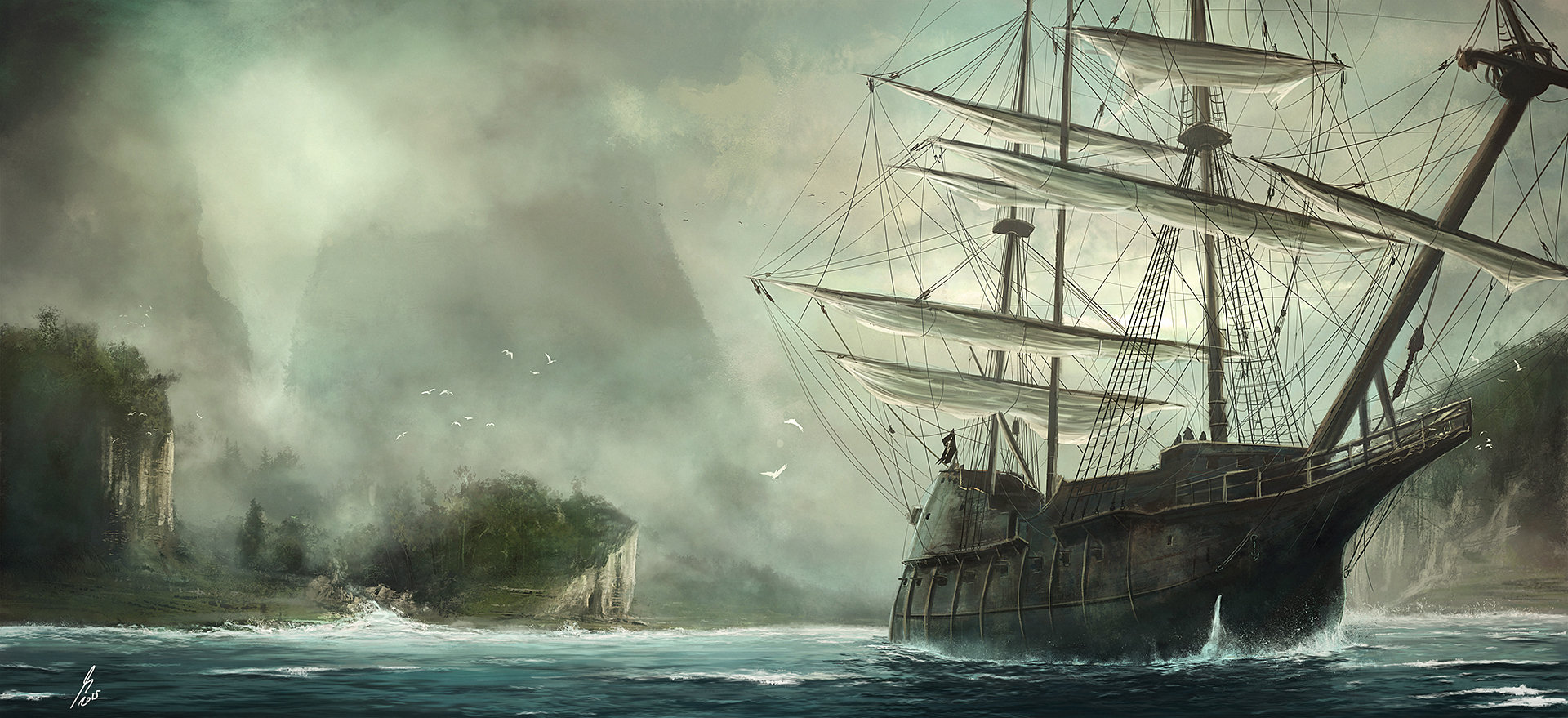

Kelch
Damage Threshold
Effective HP
Cannon Min/Max
Skeleton Crew
20
25
4/8
15
Characteristics
Unrated Ships
Braque
Damage Threshold
Effective HP
Cannon Min/Max
Skeleton Crew
15
25
3/4
5
Category Characteristics
Characteristics
Corvette
Damage Threshold
Effective HP
Cannon Min/Max
Skeleton Crew
15
25
3/4
5
Category Characteristics
Characteristics
Brigantine
Damage Threshold
Effective HP
Cannon Min/Max
Skeleton Crew
15
25
3/4
5
Category Characteristics
Characteristics
Cutter
Damage Threshold
Effective HP
Cannon Min/Max
Skeleton Crew
15
25
3/3
5
Category Characteristics
Characteristics
Dhow
Damage Threshold
Effective HP
Cannon Min/Max
Skeleton Crew
15
25
3/4
5
Category Characteristics
Characteristics
Half - Galley
Damage Threshold
Effective HP
Cannon Min/Max
Skeleton Crew
15
25
3/4
5
Category Characteristics
Characteristics


Small Craft
Rowboat
Damage Threshold
Cannon Max
Skeleton Crew
0
0
1
Category Characteristics
Longboat
Damage Threshold
Cannon Max
Skeleton Crew
0
1
1
Category Characteristics
Characteristics
DM Tools
General Tips:
Tiers of Rules:
Just Ships, Please
Captain Hook
Add
Travel Roles
Alternate Overboard Save Rules
Ignore
Pirates of the Caribbean
Documentary
Add
Crew in Combat Rules
Payment Model
Black Powder and Cannon Shot
Direct Wind Facing Penalty
Alt Medicine DC
(p.30)Tattoos:
Non-Official
Bragging Rights
Branding:
Identification
Self-Expressive:
Indecent/Pirate


Nautical Terms
Ahead
Aft
Astern
Amidships
Ballast
Beam
Bilge
Belaying pin
Boom
Bow
Come about
Cordage
Crow’s nest
Draft
Disembark
Forecastle
Forward or Fore
Forecastle
Heave to
Heel
Helm
Hold
Hull
Jacob’s ladder
Keel
Knots
Leeward
Length
List
Mast
Mizzenmast
Orlop deck
Poop deck
Port
Prow
Quarterdeck
Raking Fire
Rigging
Rudder
Running
Sail
Square: A rectangular sail hung from a single yard. The simplest and oldest form of rigging which permitted sailing only before the wind.
Lanteen: A triangular sail set on a long yard mounted at an angle on the mast. Capable of taking the wind on either side.
Jib: A triangular headsail that sets ahead of the foremast of a ship, mainly used to increase performance and overall stability by reducing turbulence.Sinking:
Speed
Starboard
Stern
Stern castle (After castle, Aft castle)
Tacking
Topside
Underway
Velocity
Waist
Yard
Yardarm
Integrating Other Homebrew
Alternate Rests
Evolving Cantrips, by u/Craios125
Mathew Mercer’s Gunslinger
Darker Dungeons, by u/giffglyph
Fortresses, Temples, & Strongholds (v4), by Warlock
The Expansion Slots of ships are as follows:
1st Rate: 3
2nd Rate: 2
Unrated: 1
East Indiaman: Includes “Lodgings” room for free
Galleon: Includes “Barracks” for free
Guineaman: Extra Expansion slot available (4 total)
Galley: Extra Expansion Slot Available (3 total) 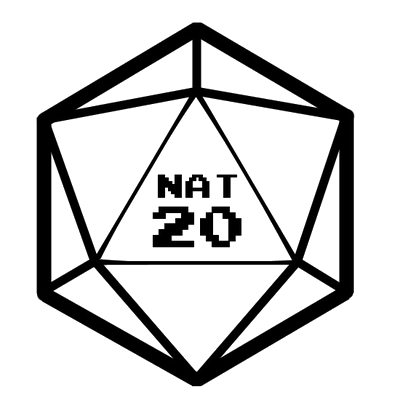

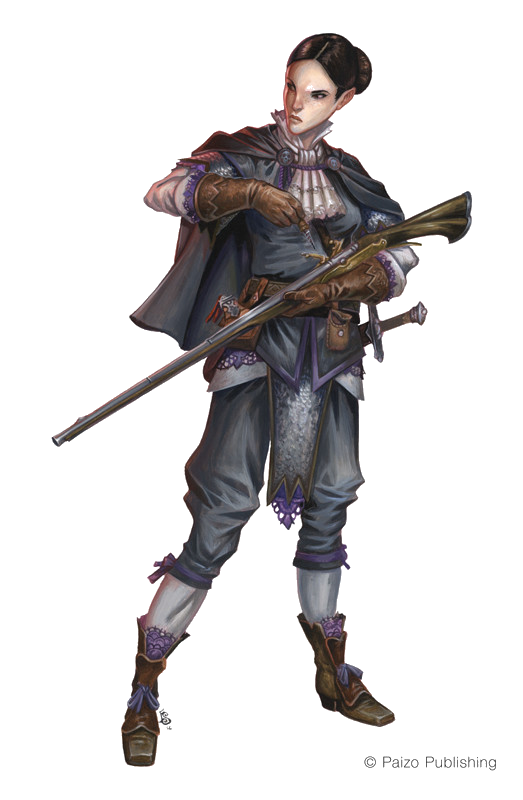


Thanks & Credits
To the Following Characters (and their Players)
A special thanks to the following people:
Other Influences:
Art Credits
(retrieved from http://teamcolors.blogspot.com/20
11/09/pirate-paintings-for-national.html)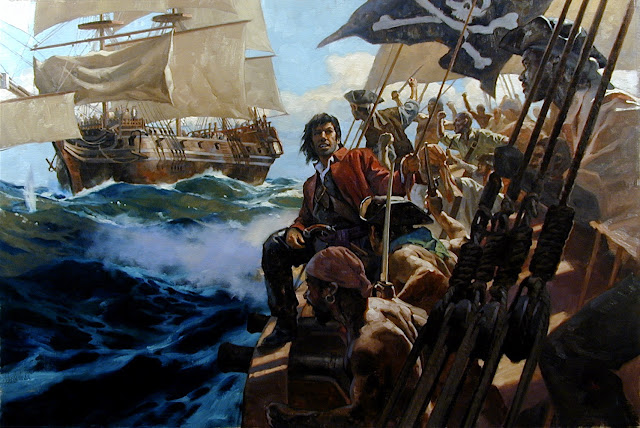

Changelog
v0.1 - 0.2
v0.3
v0.4
v0.5
v0.6
v1.0
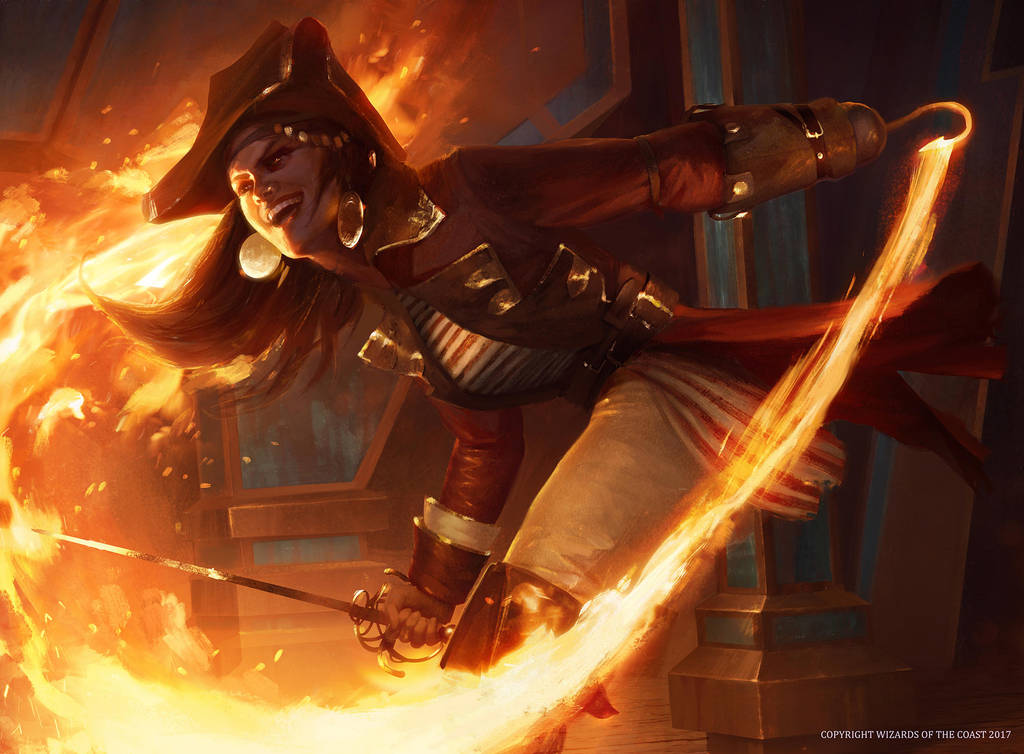



Field of Fire Templates